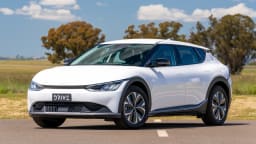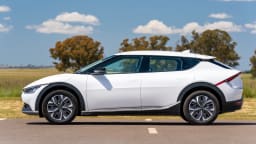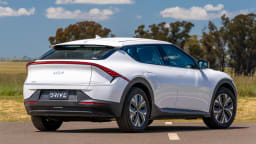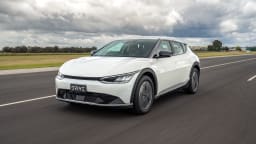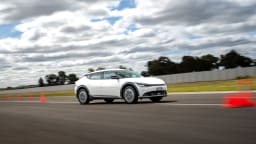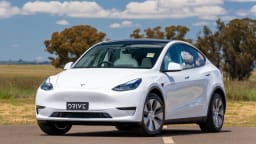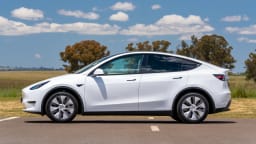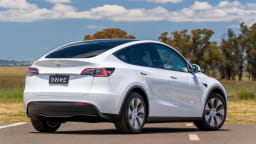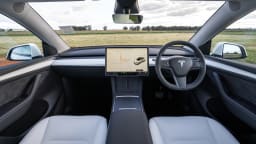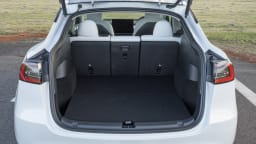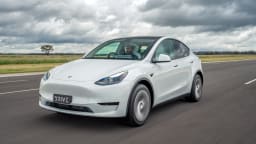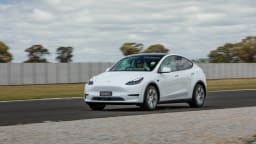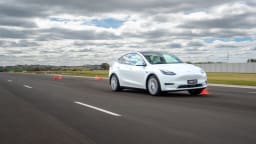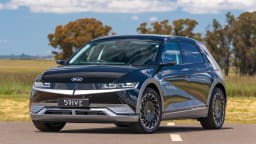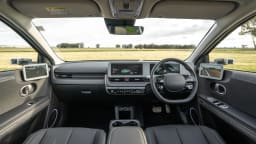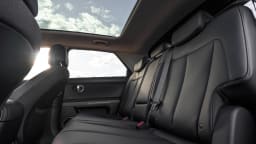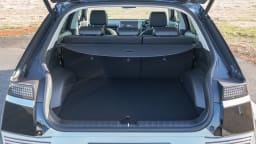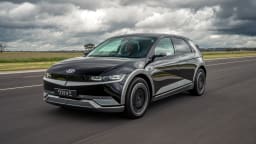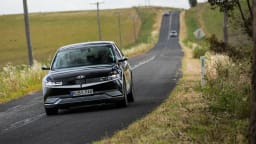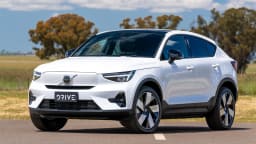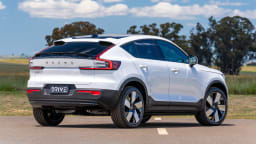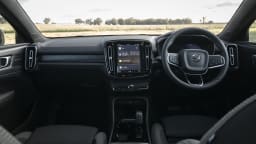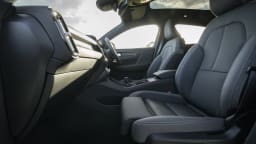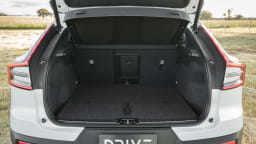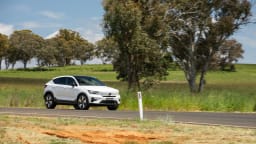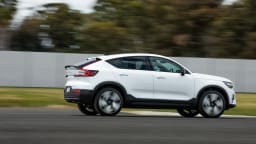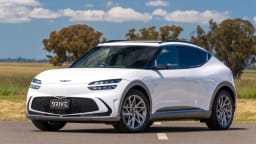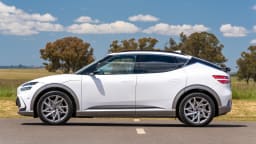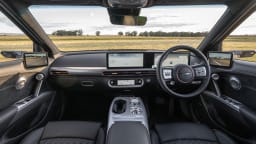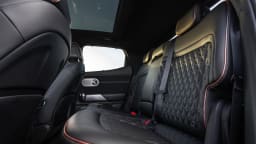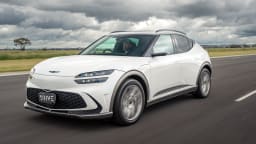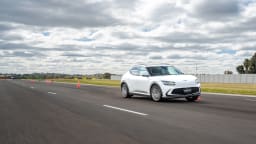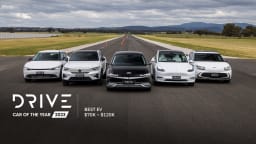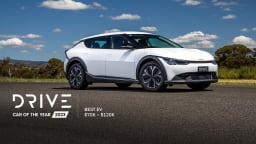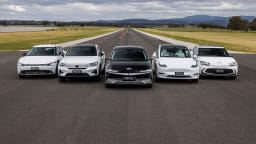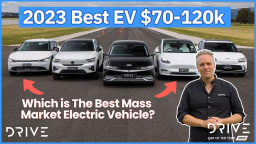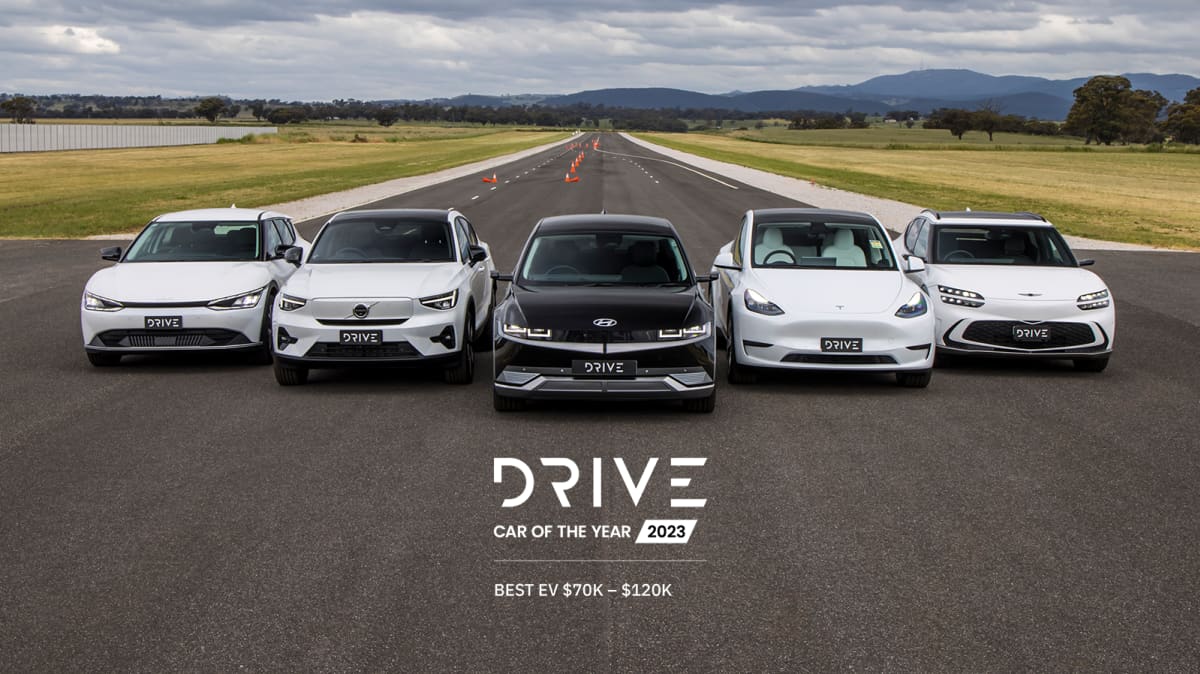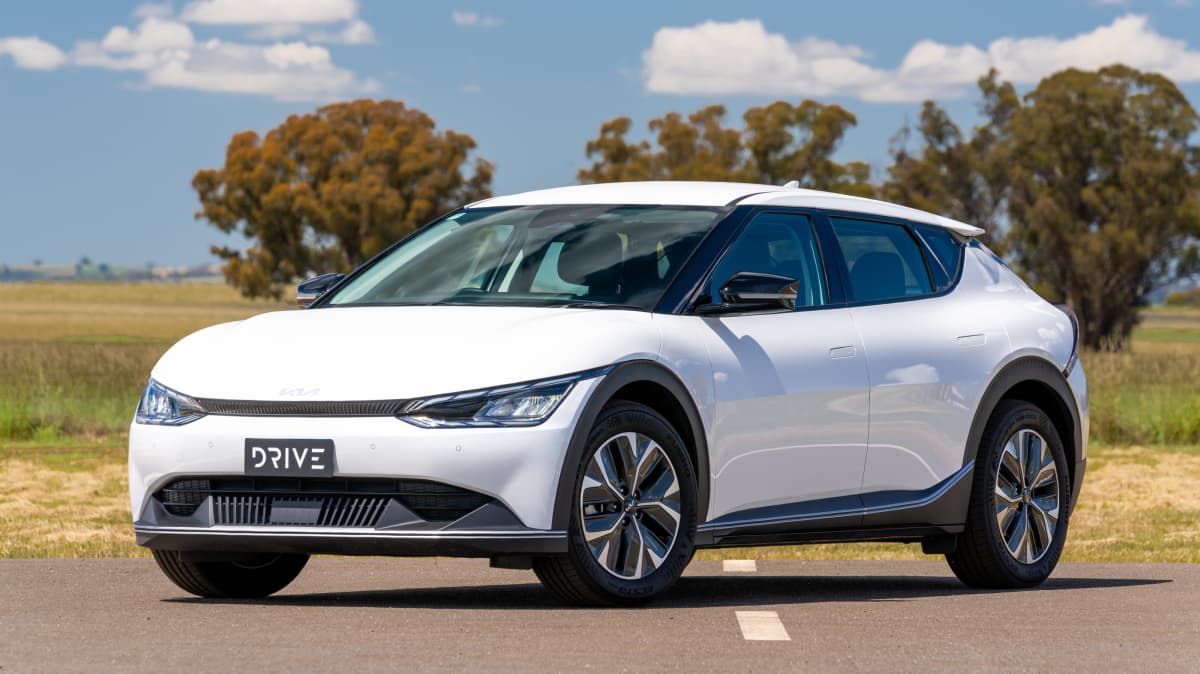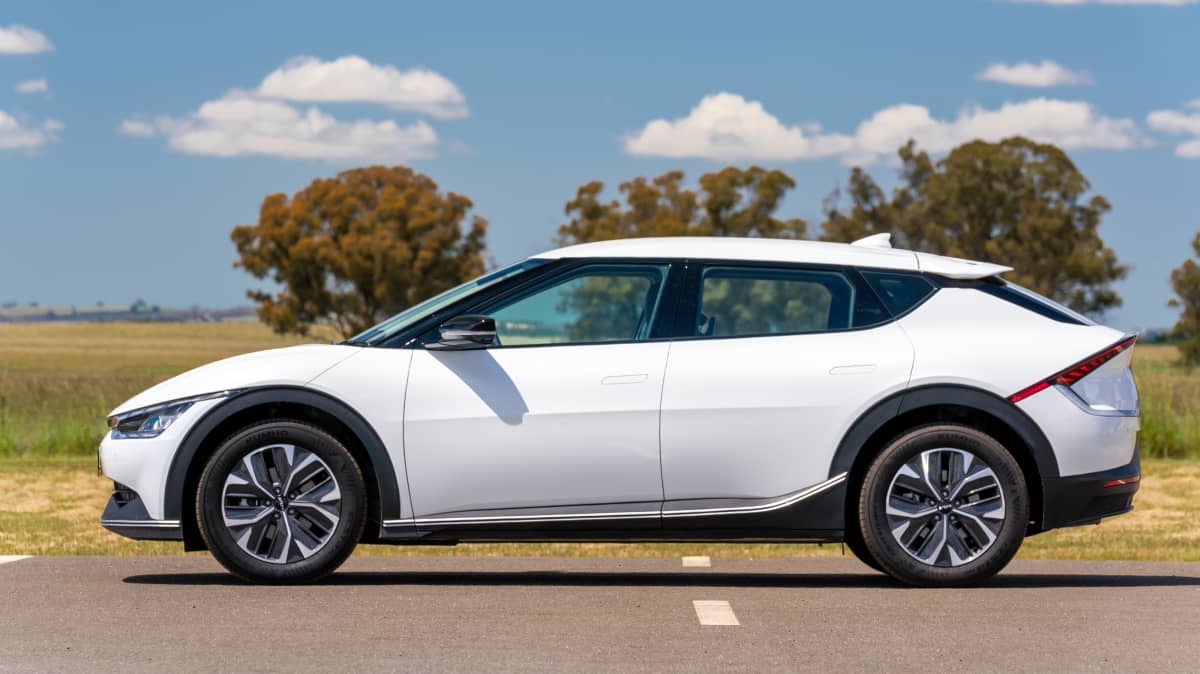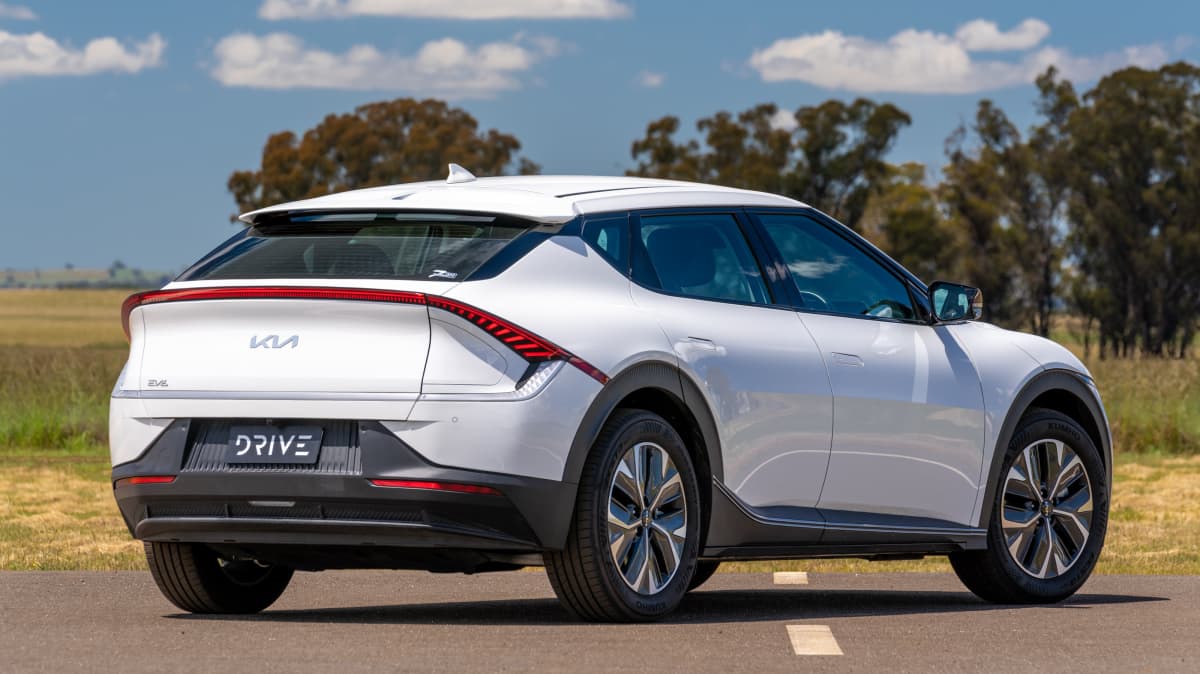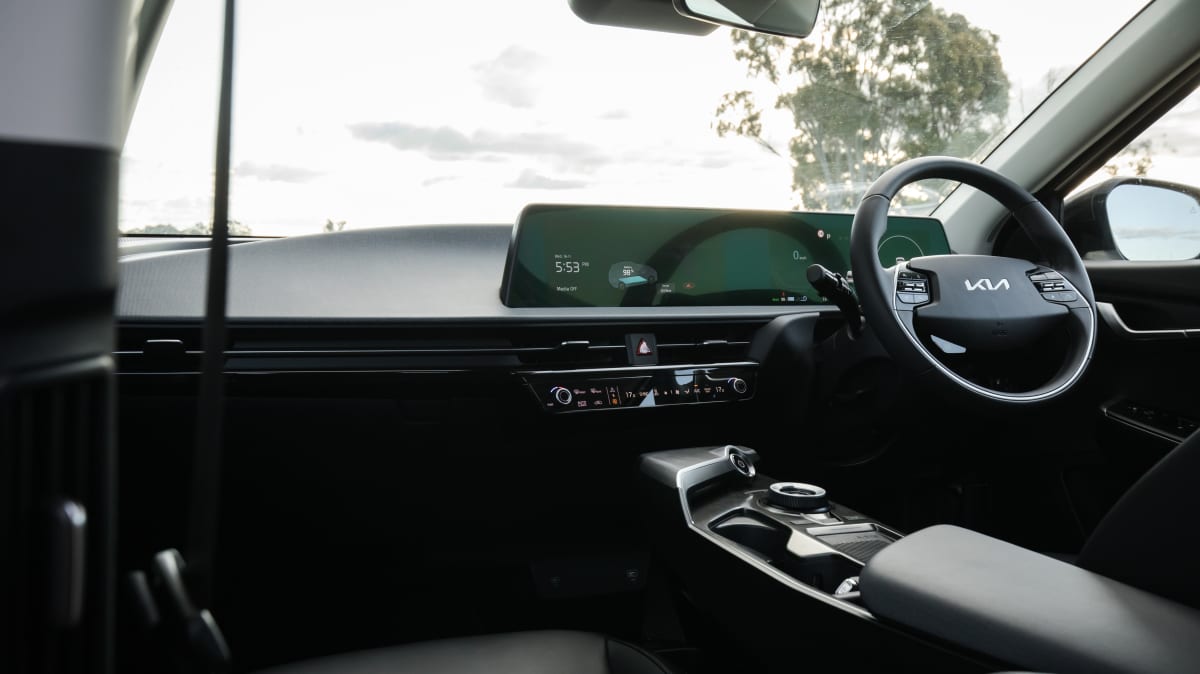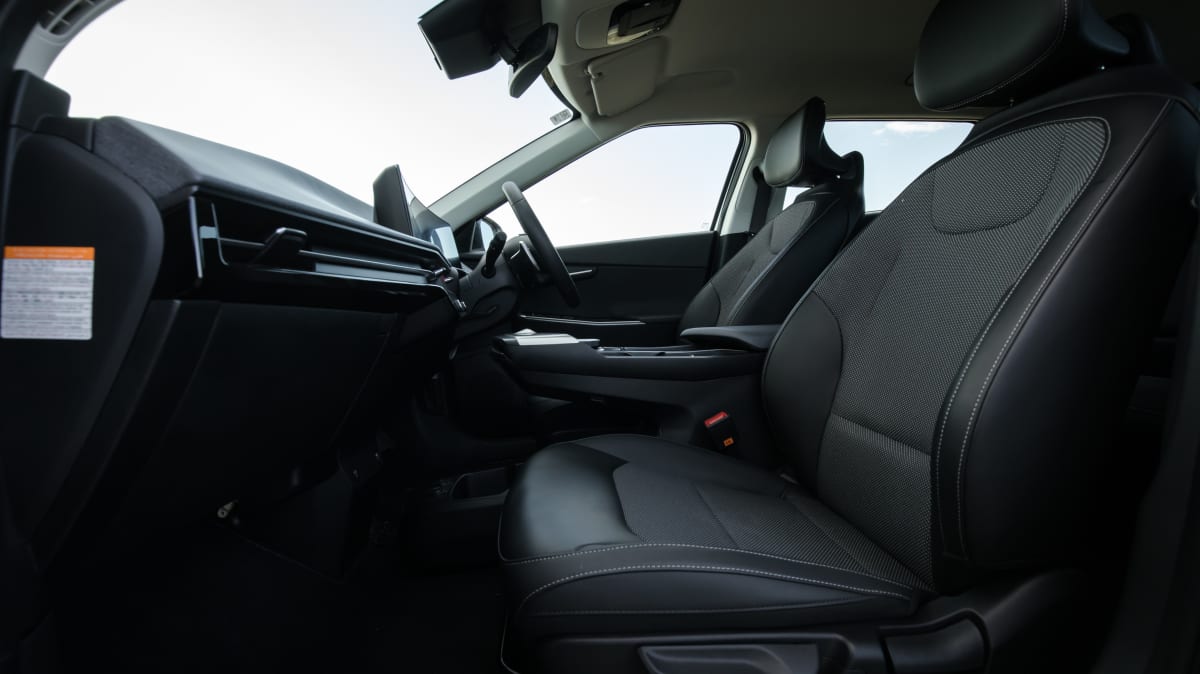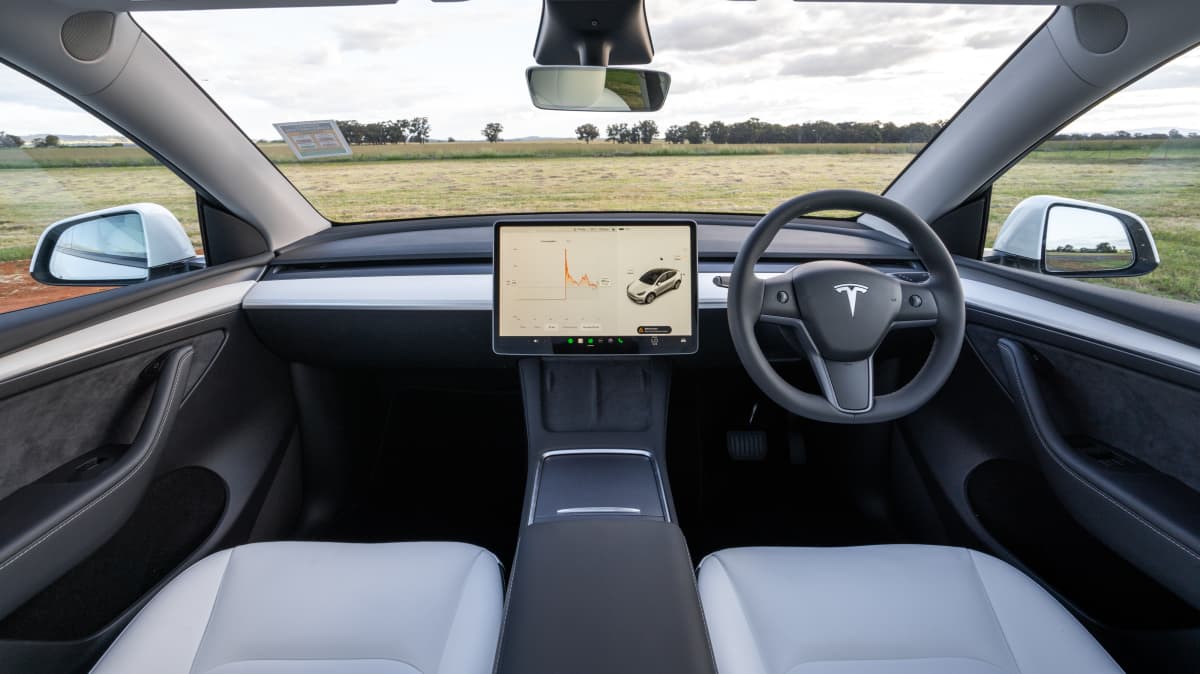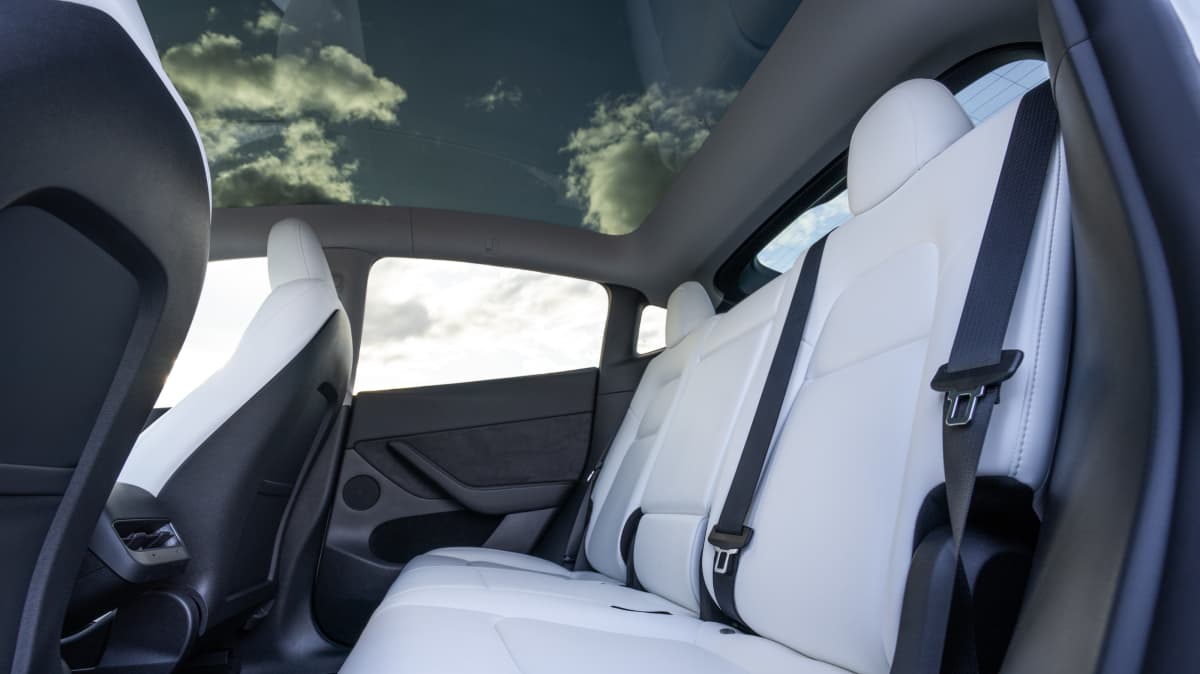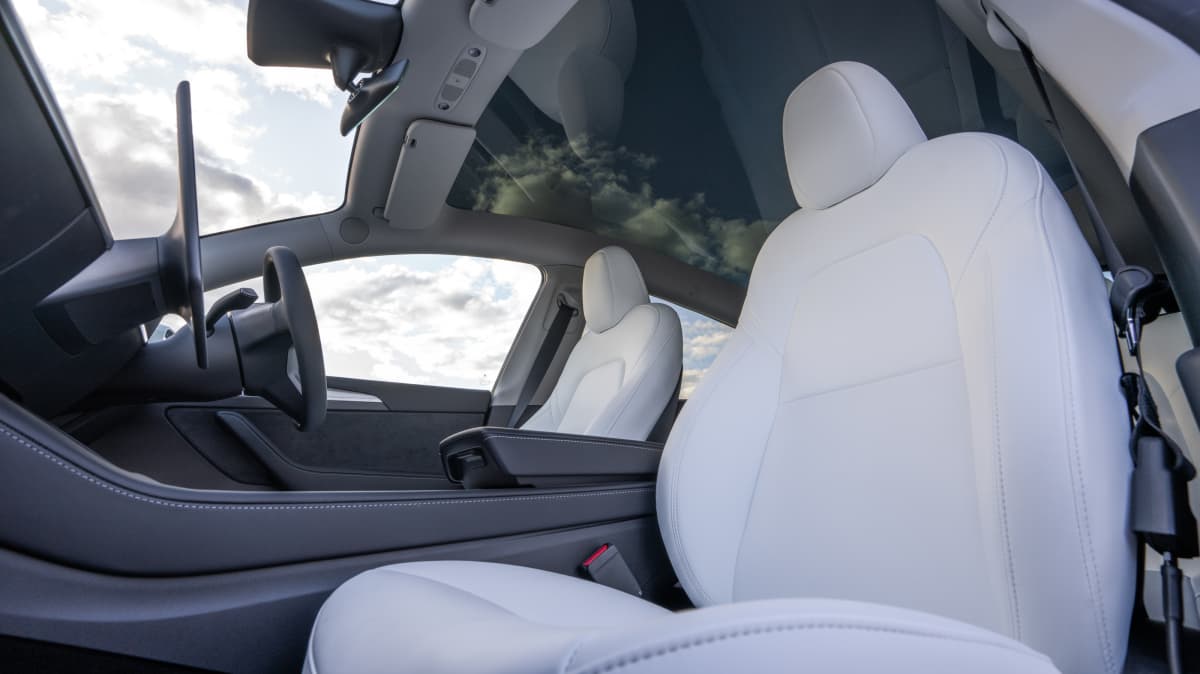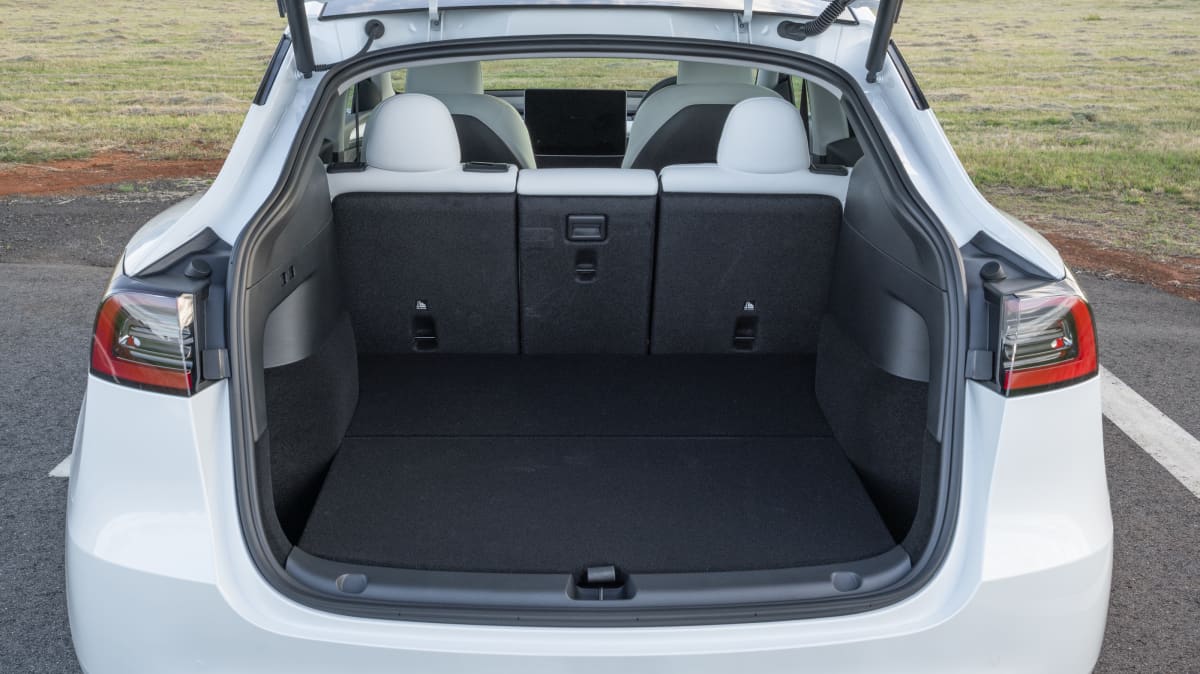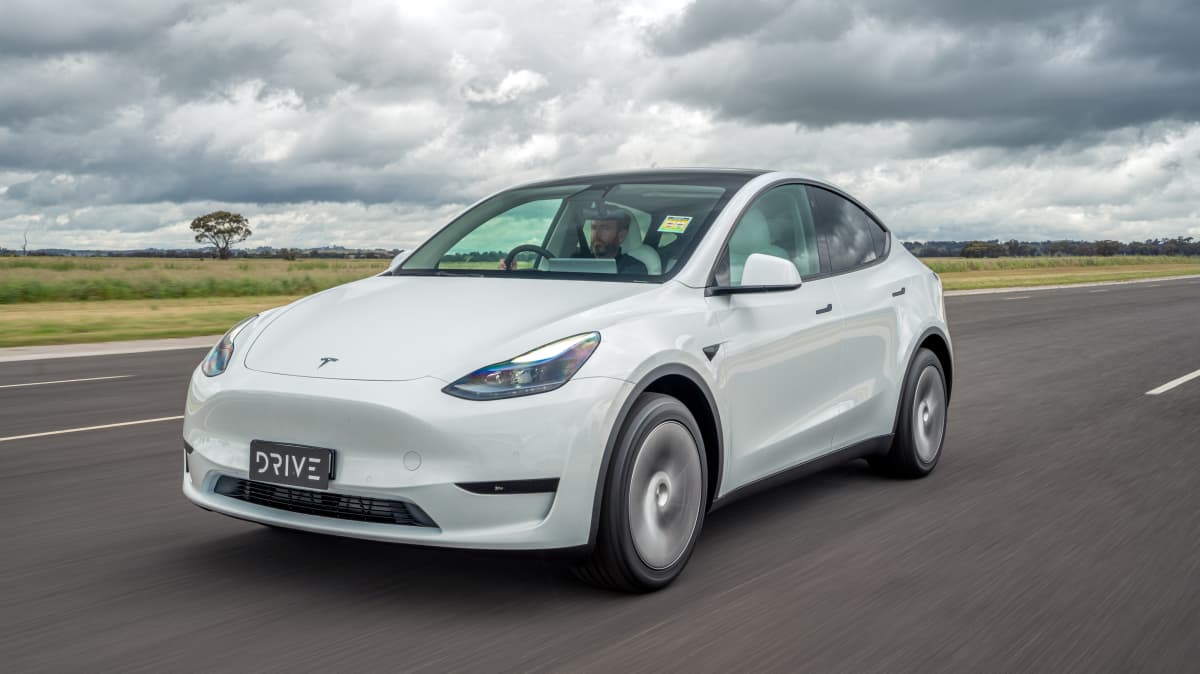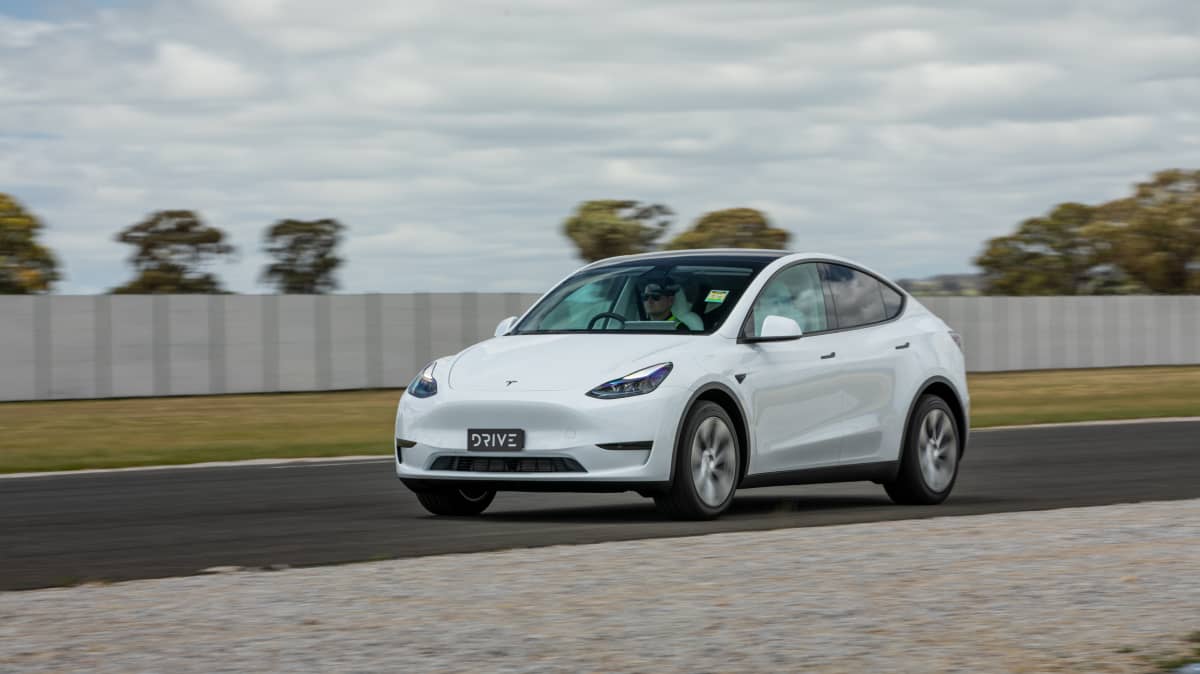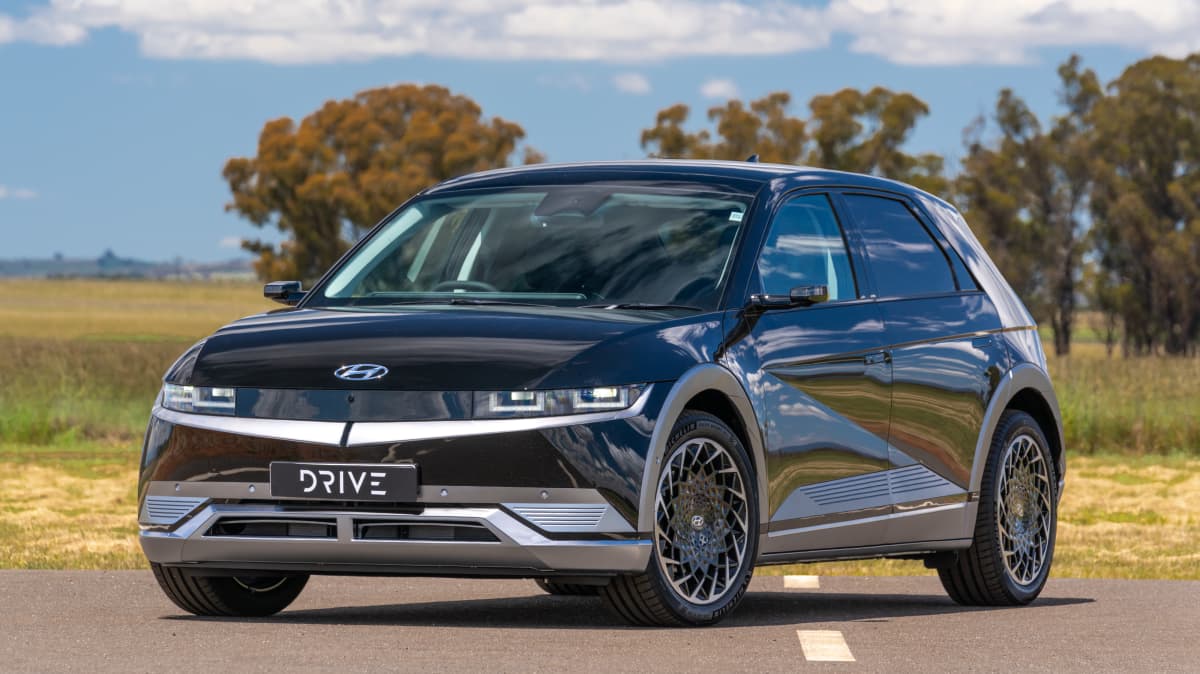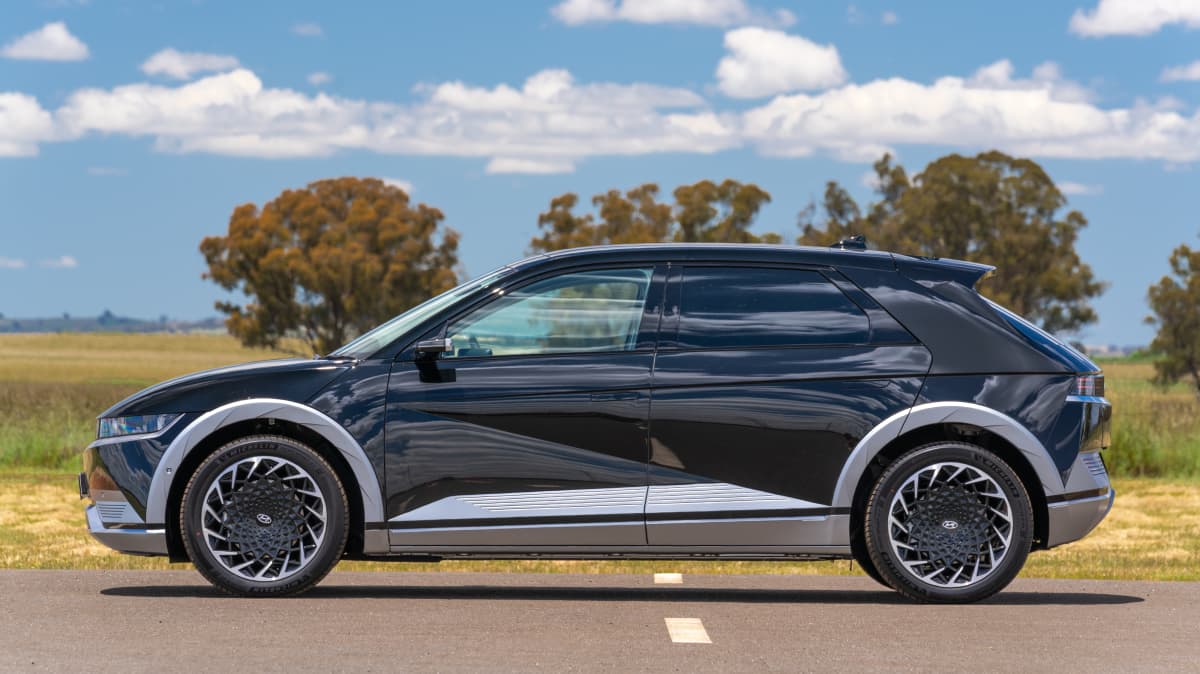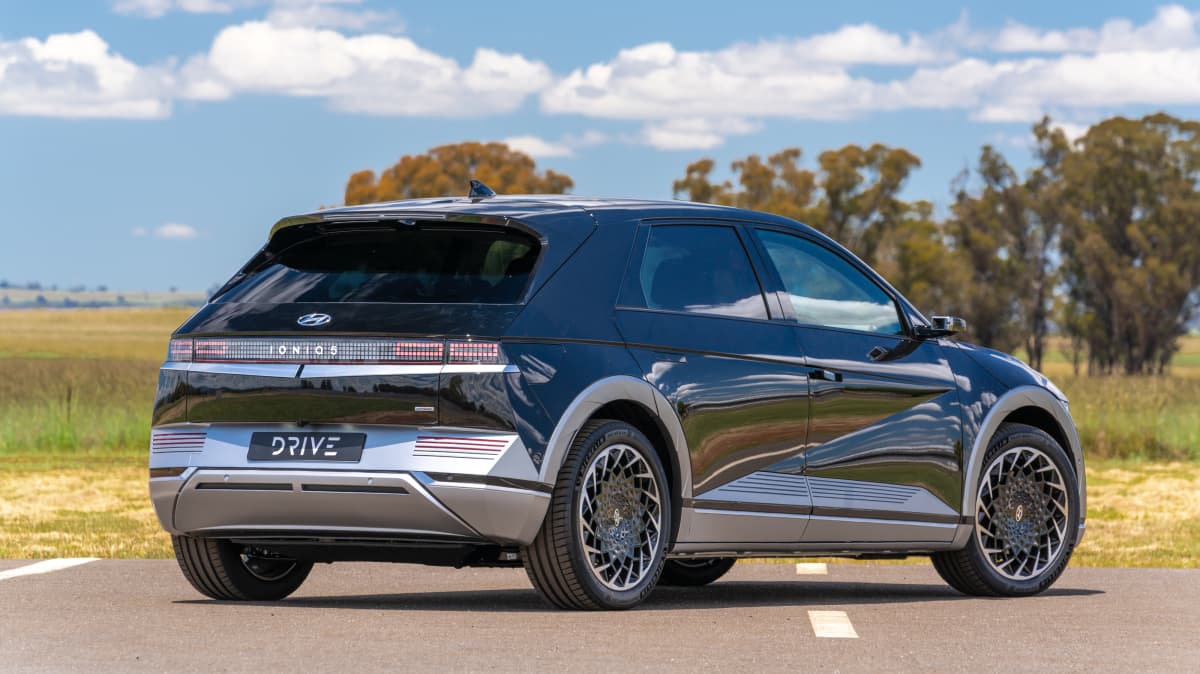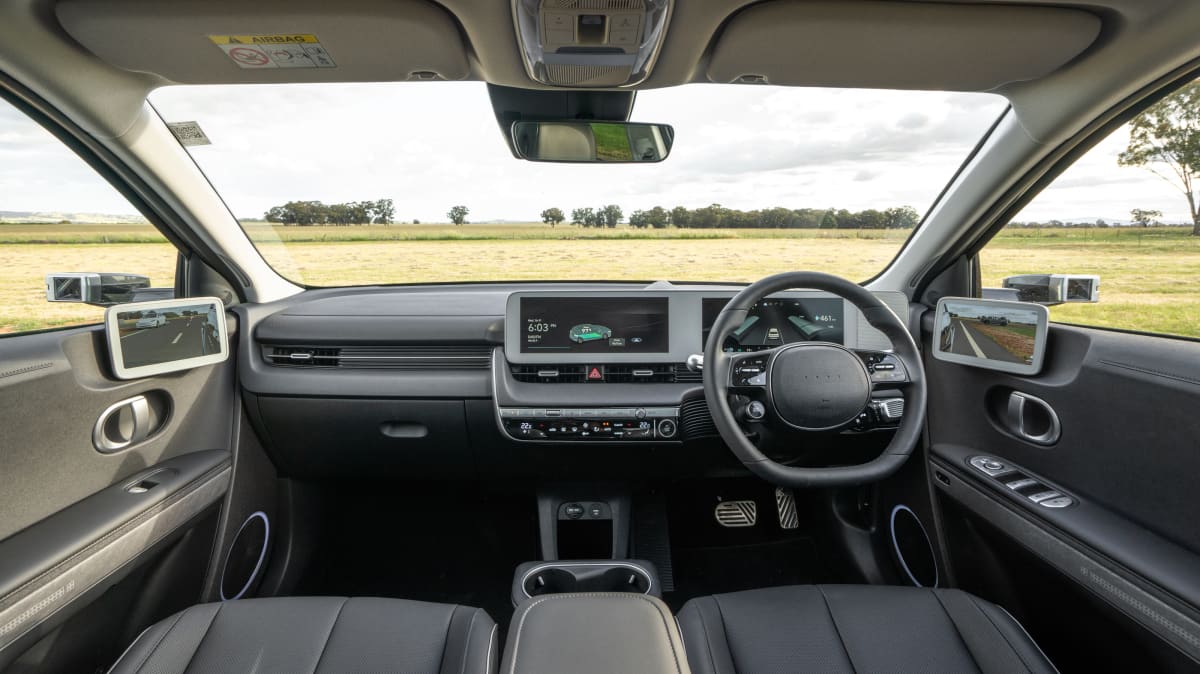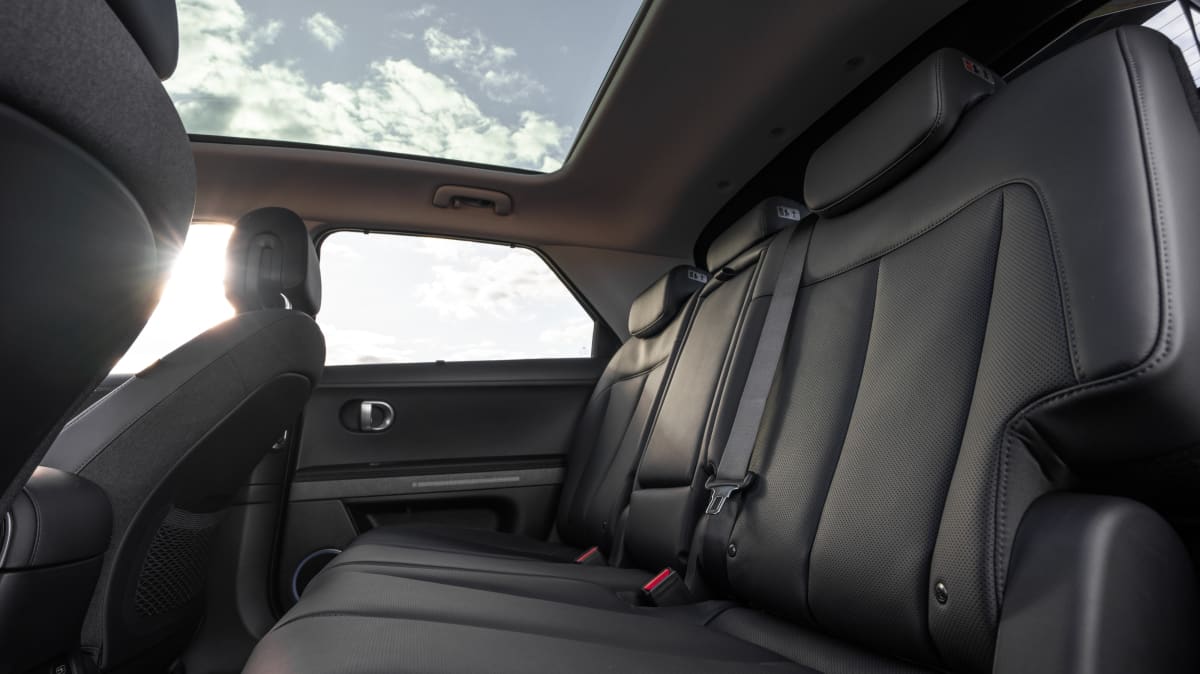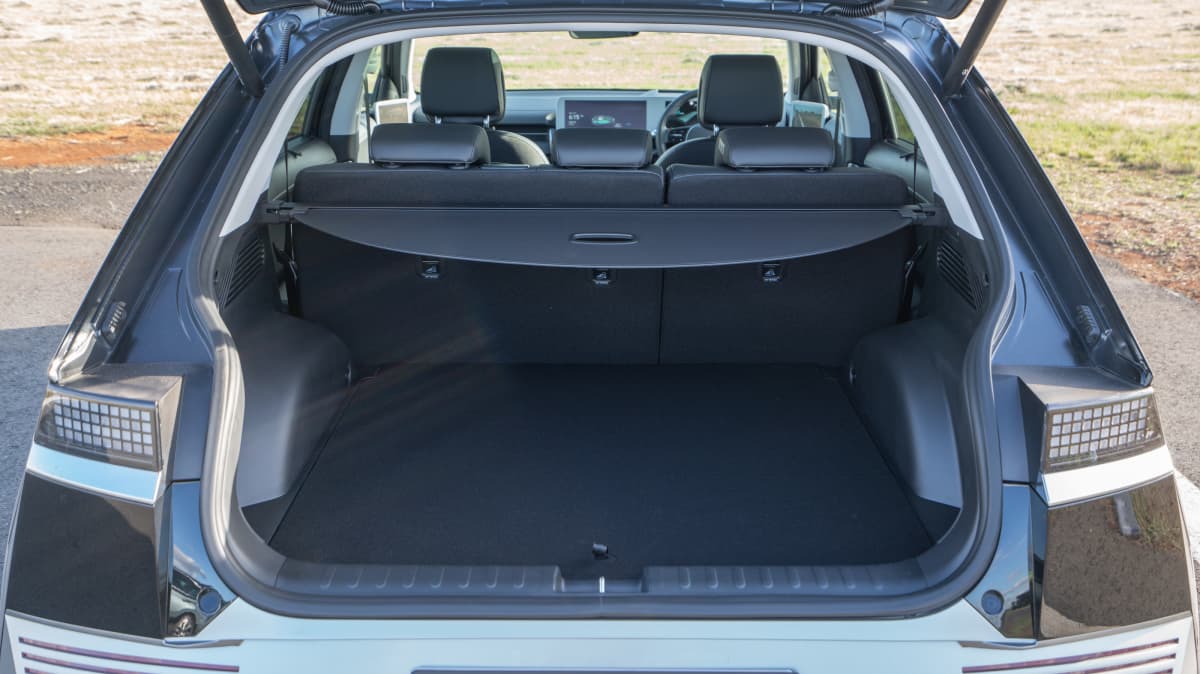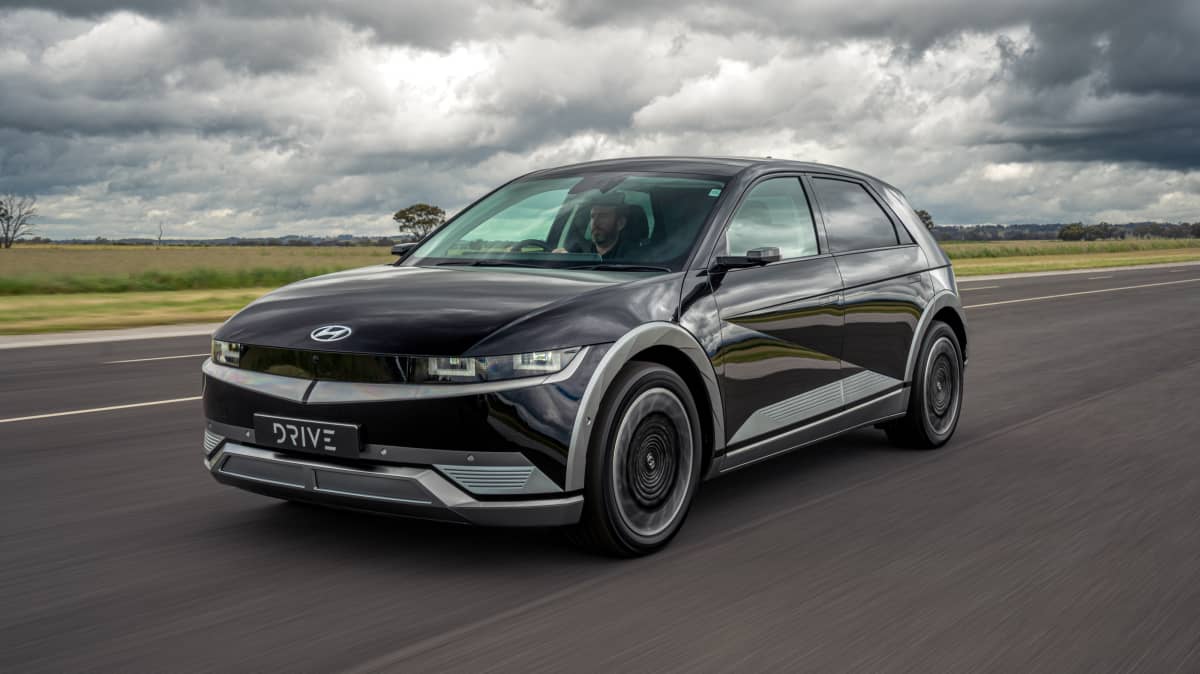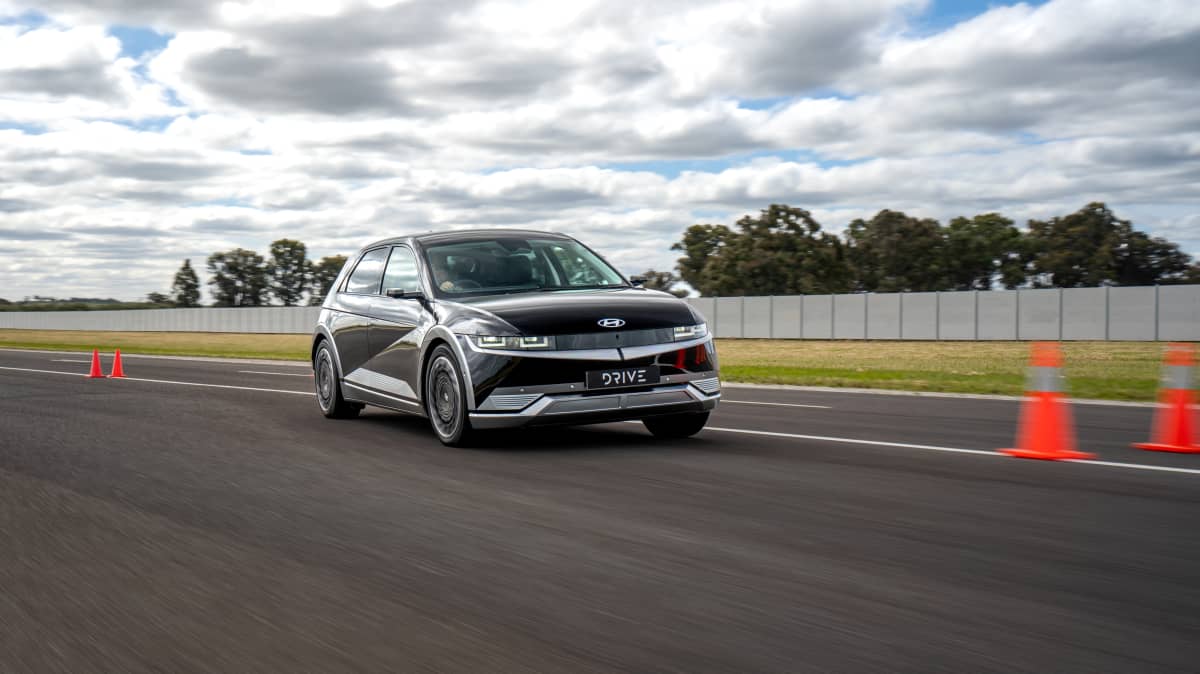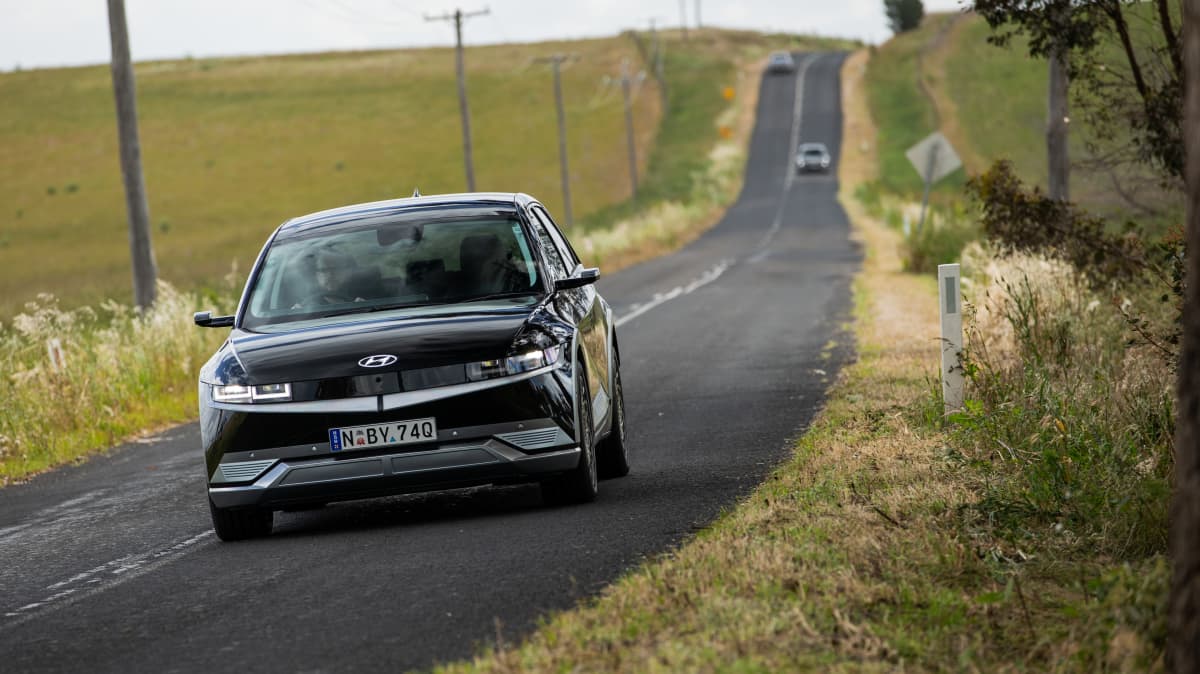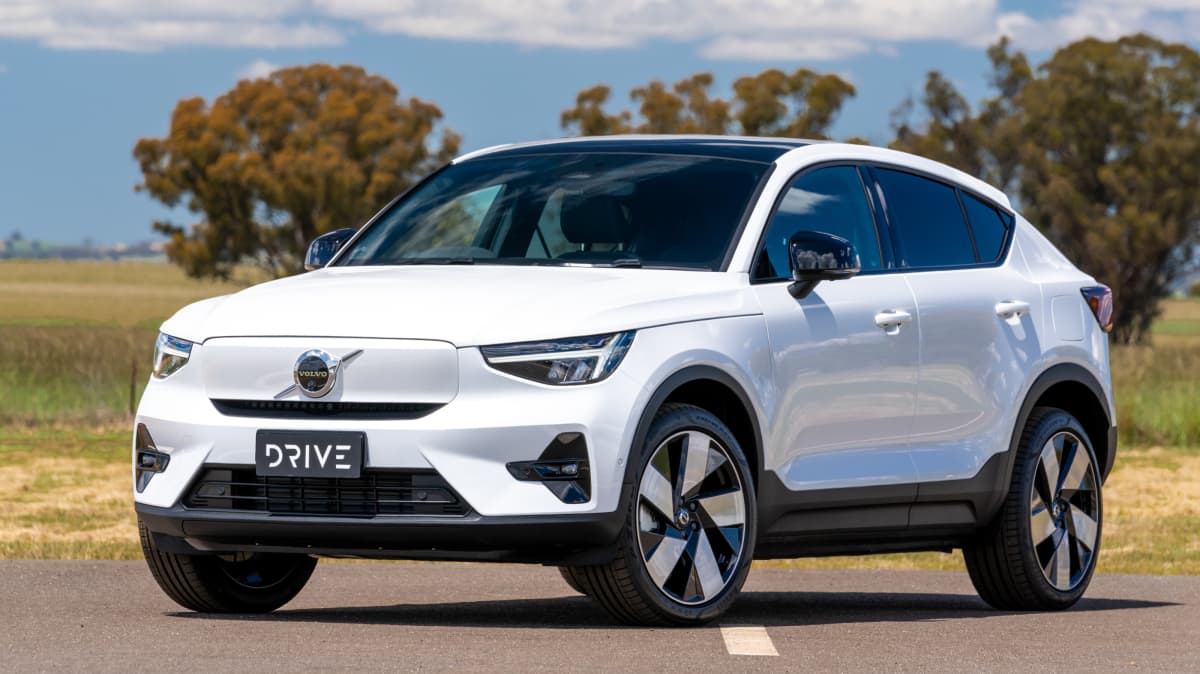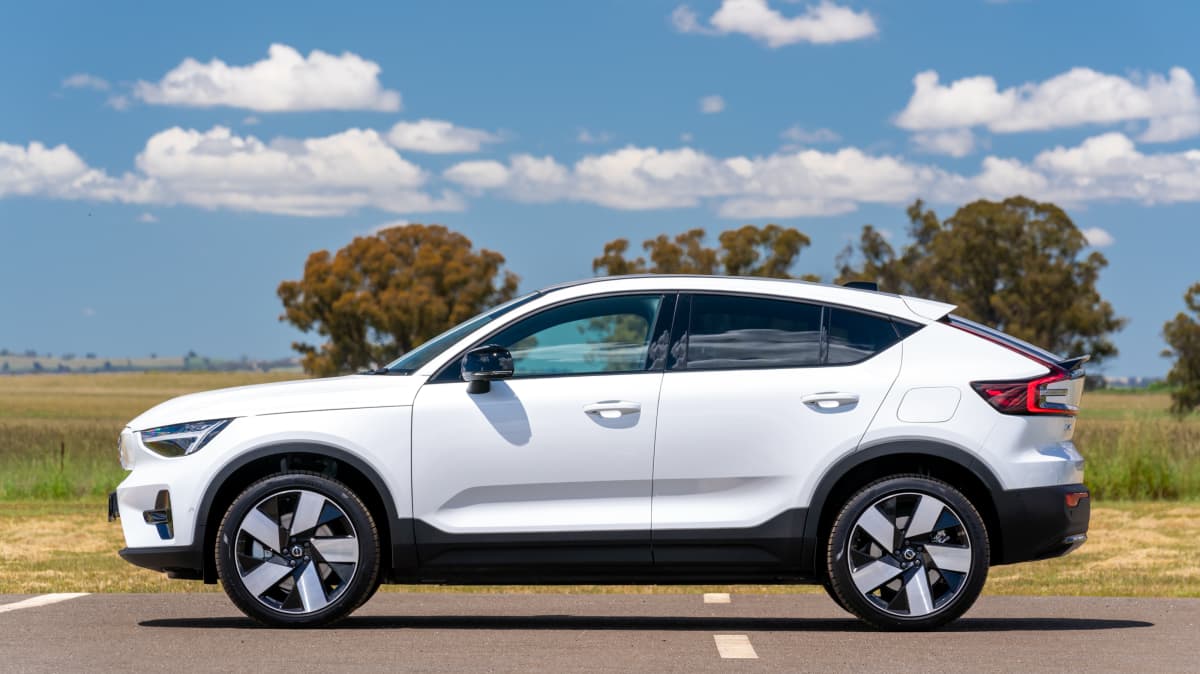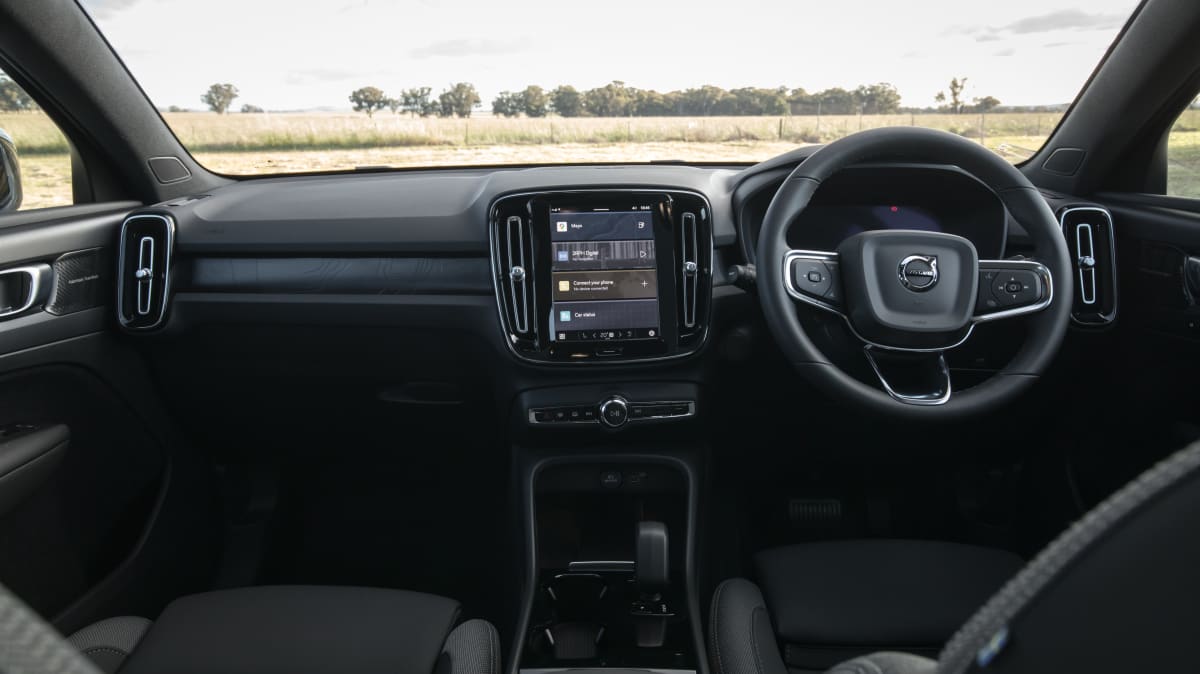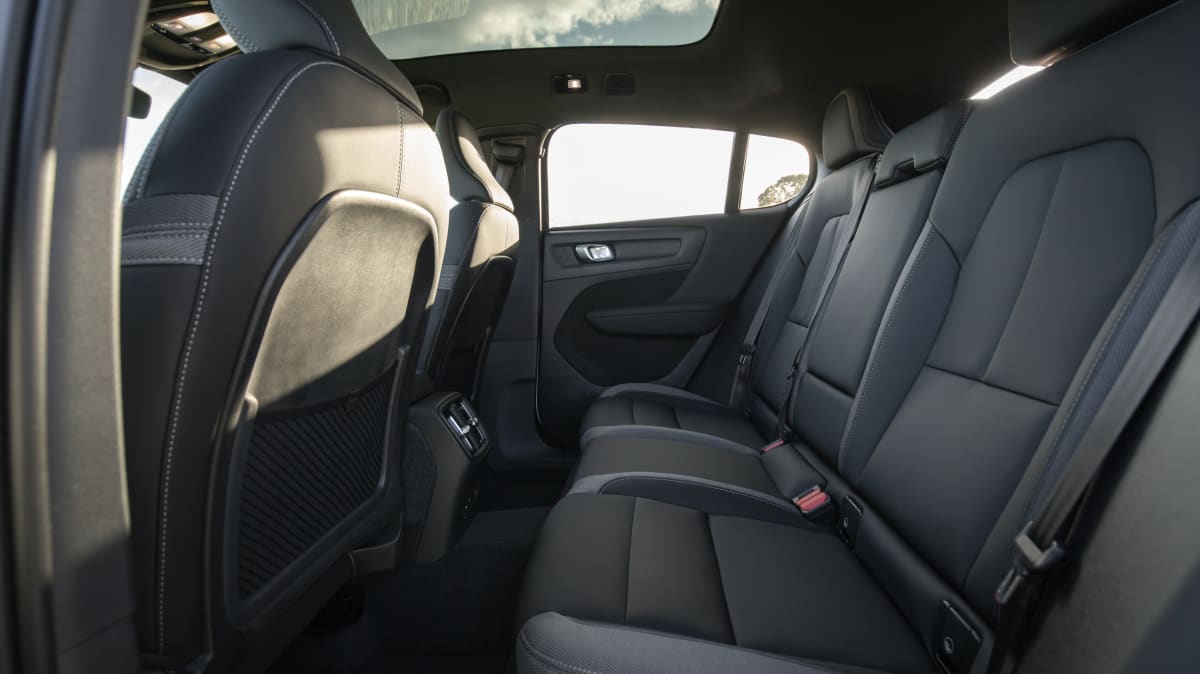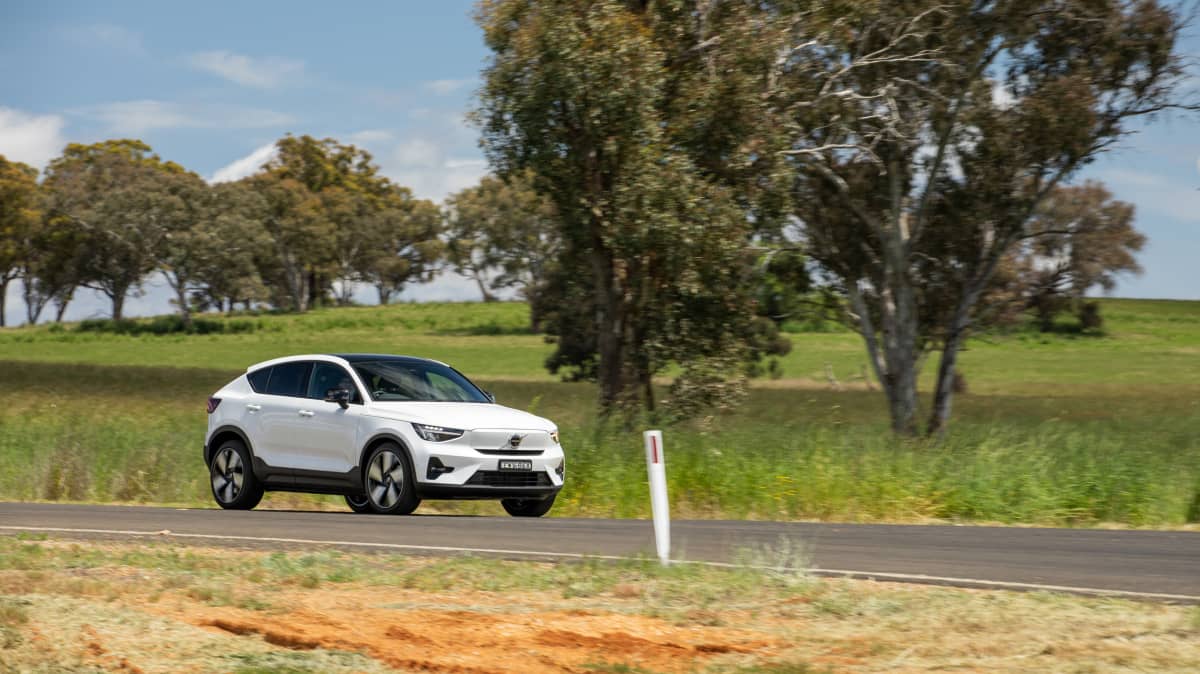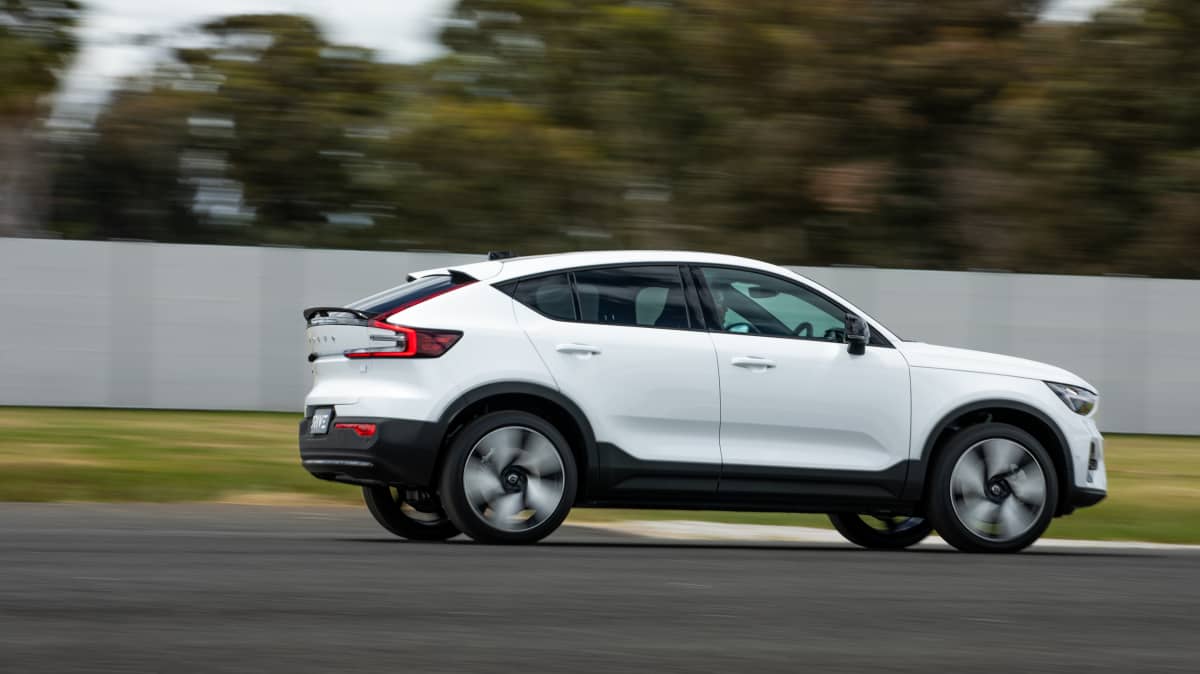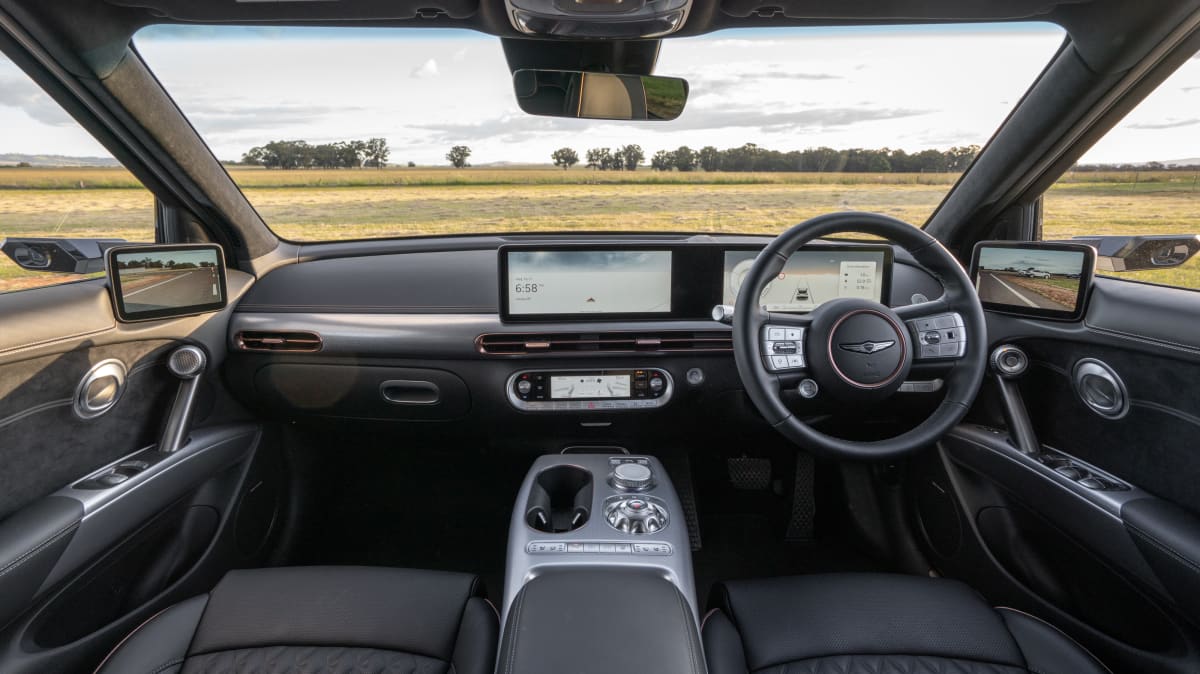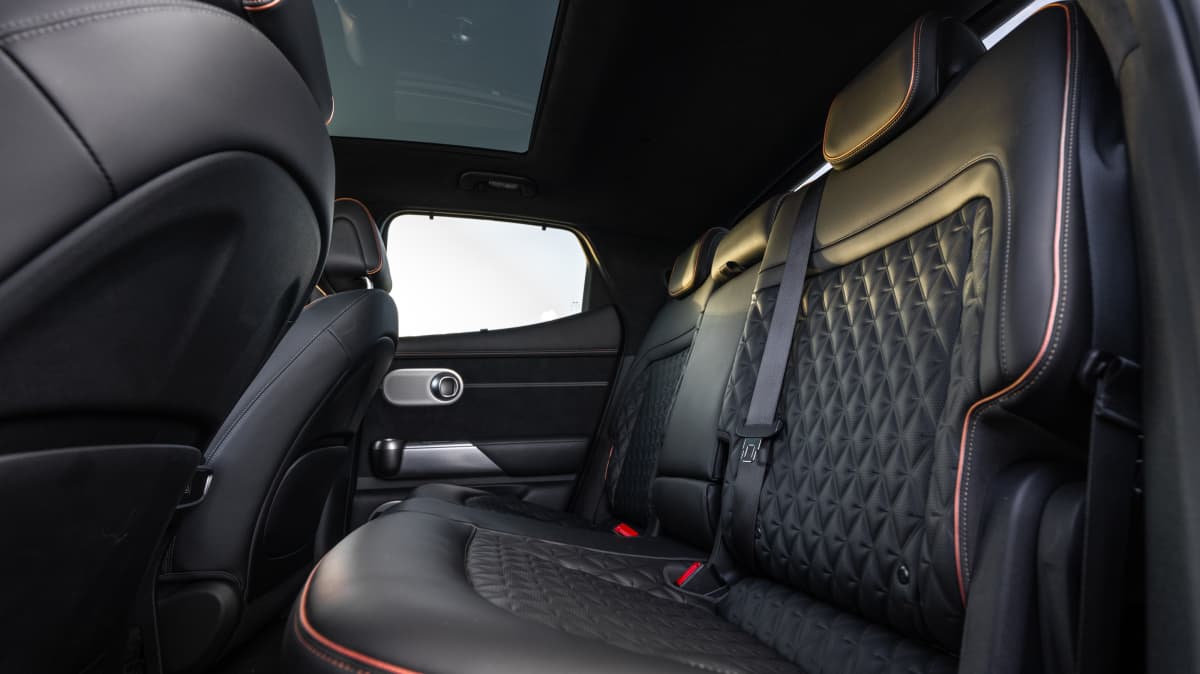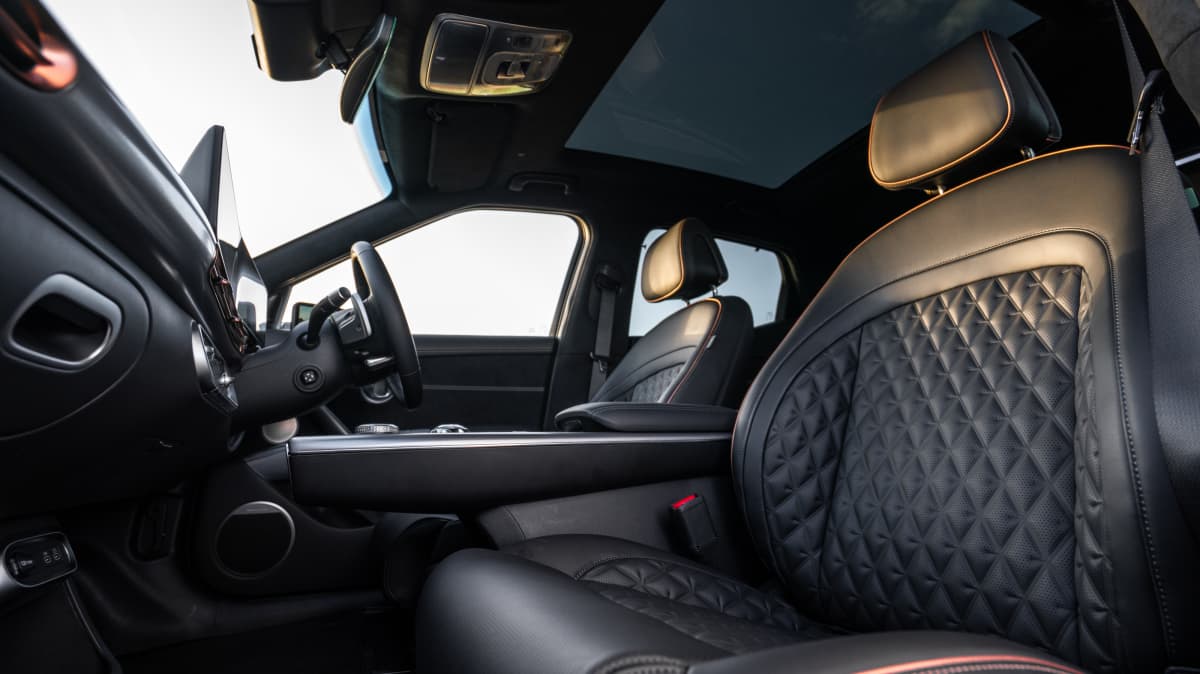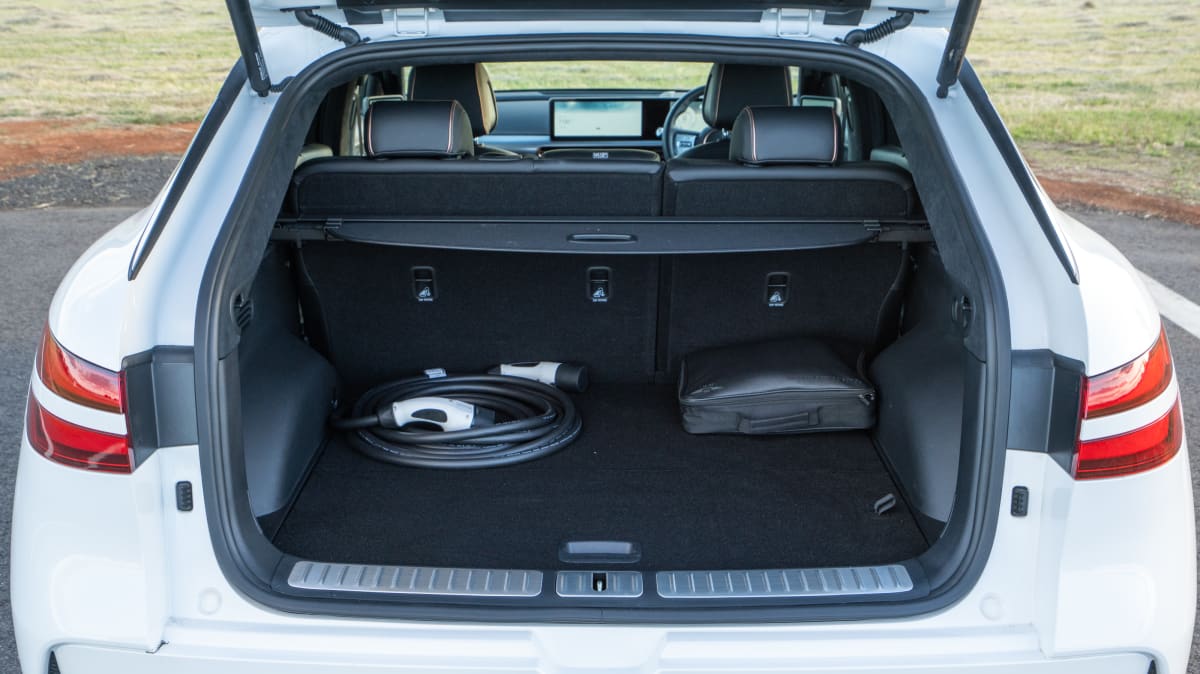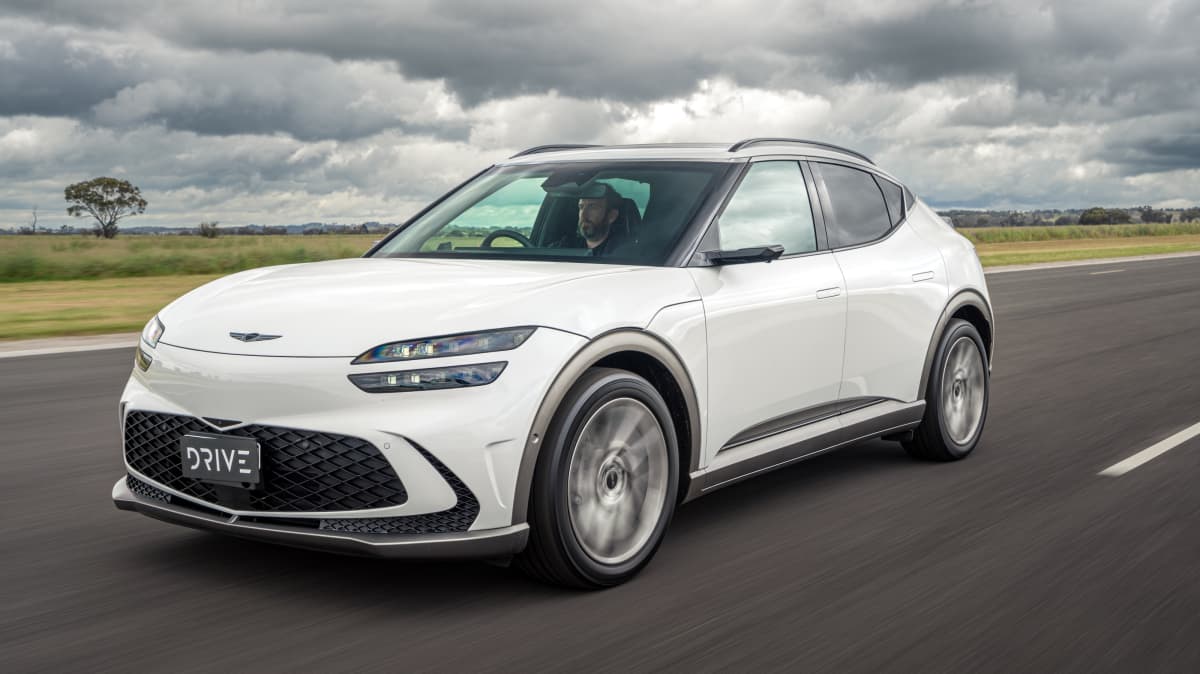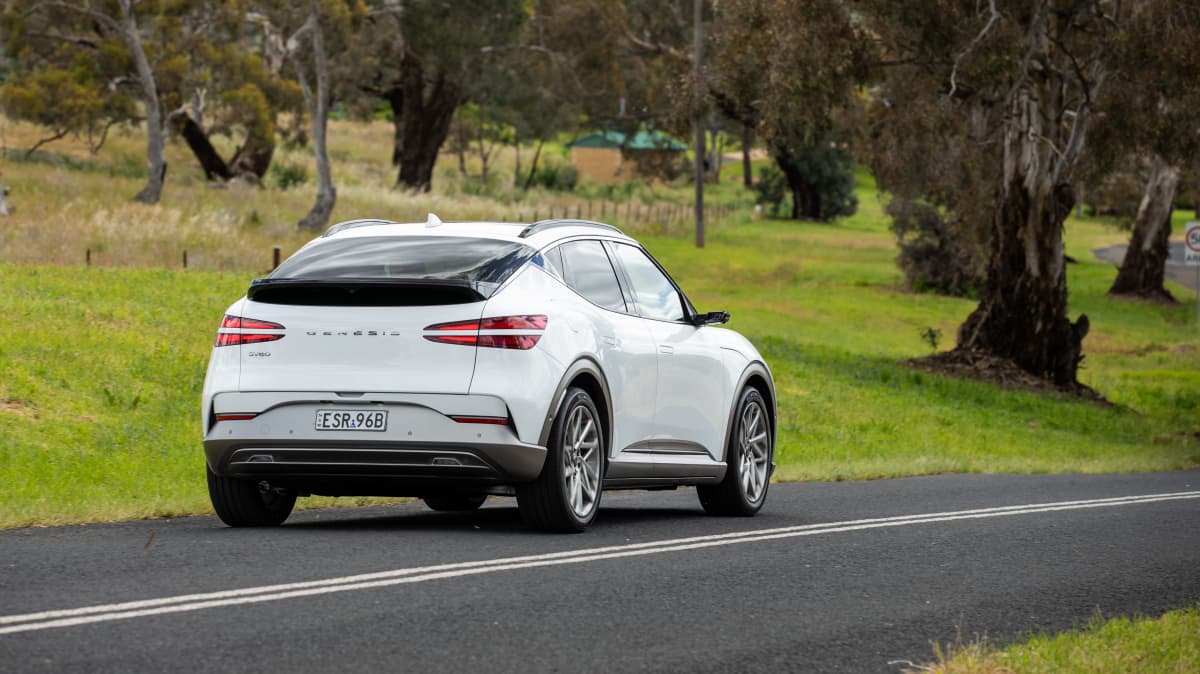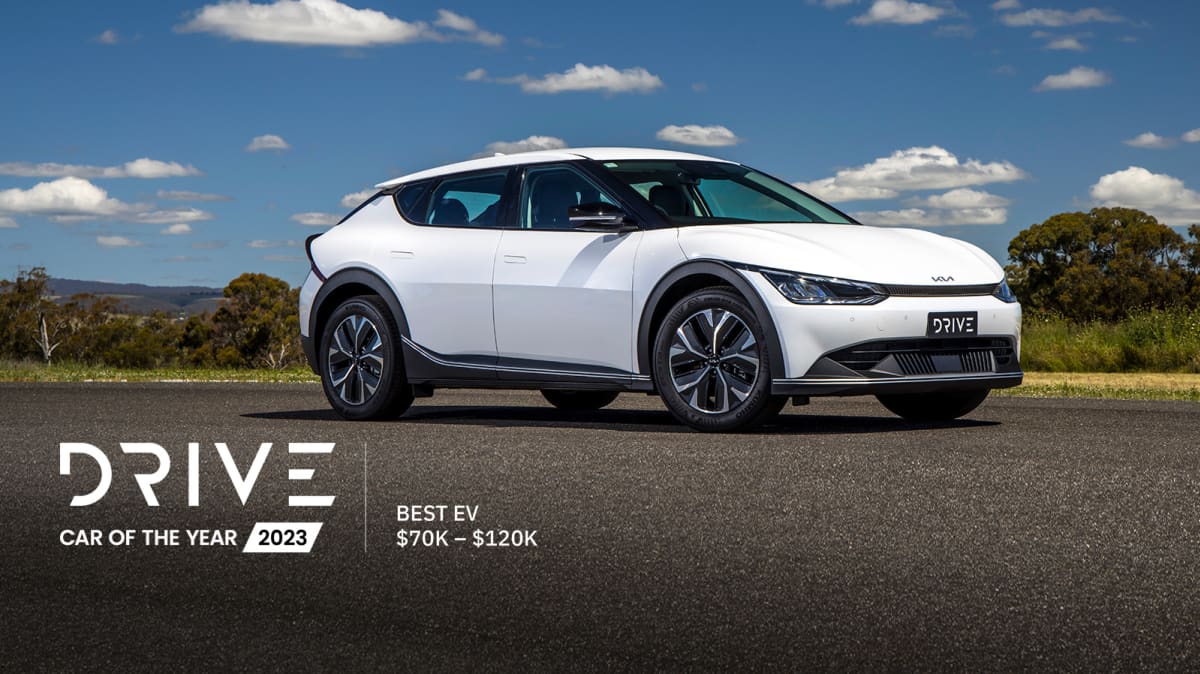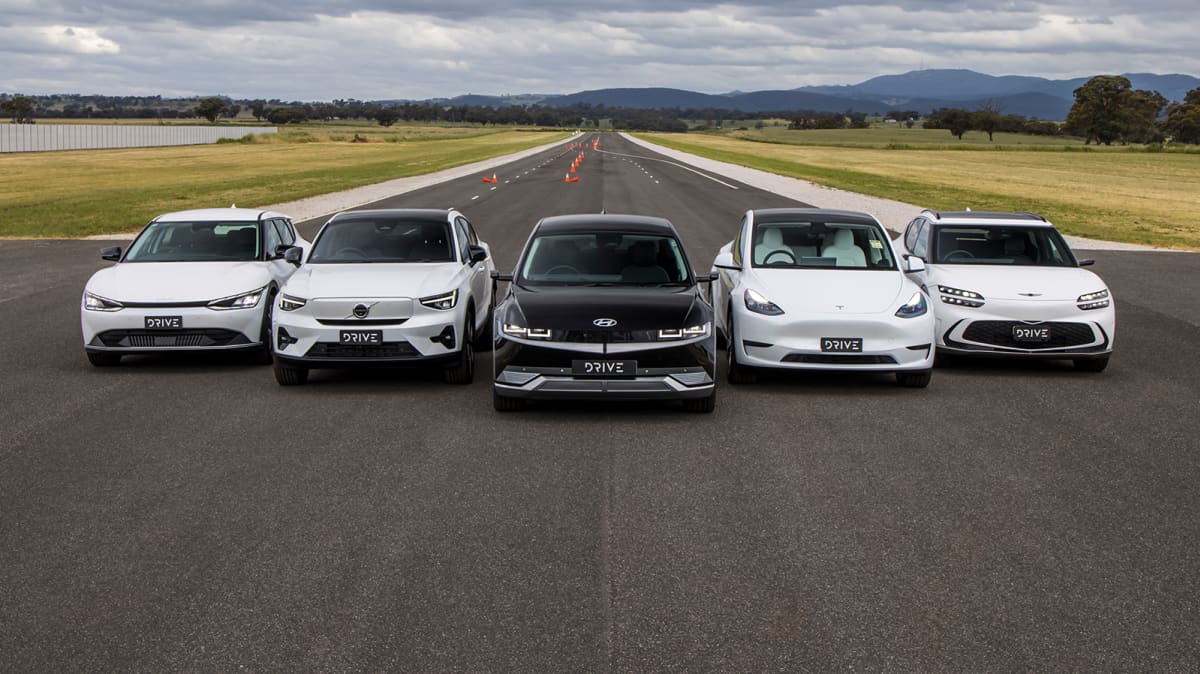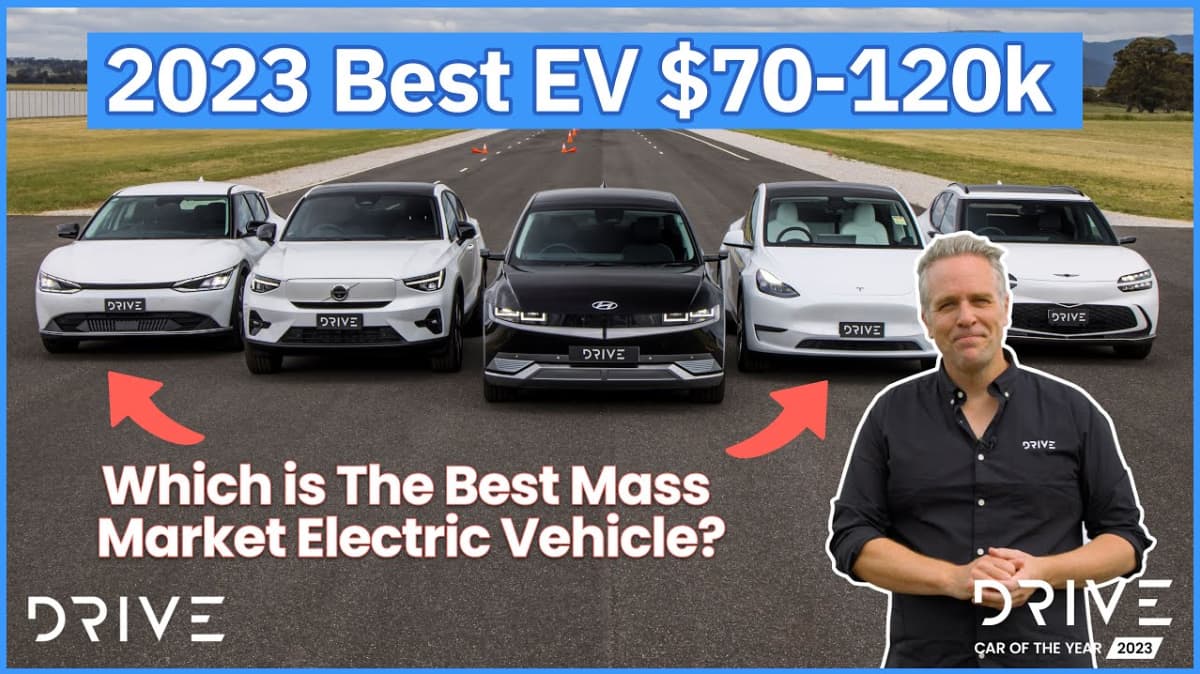Best EV $70,000–$120,000 2023
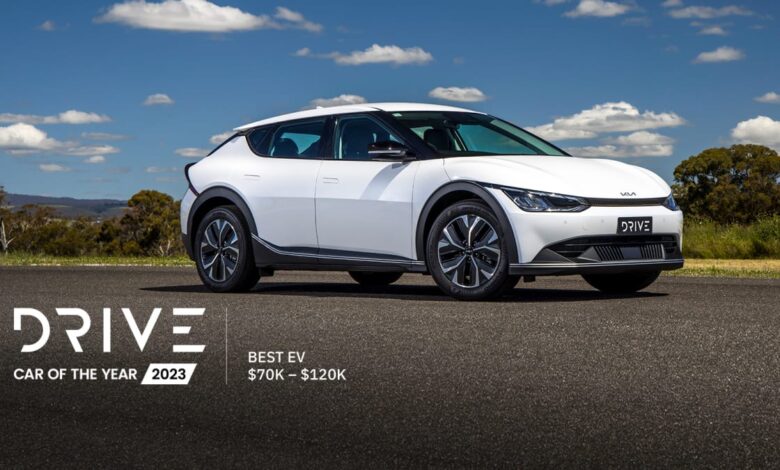
This year’s biggest electric car category sees three Koreans, a Swede and an American walk into Drive Car of the Year. Best EV $70,000–$120,000 2023
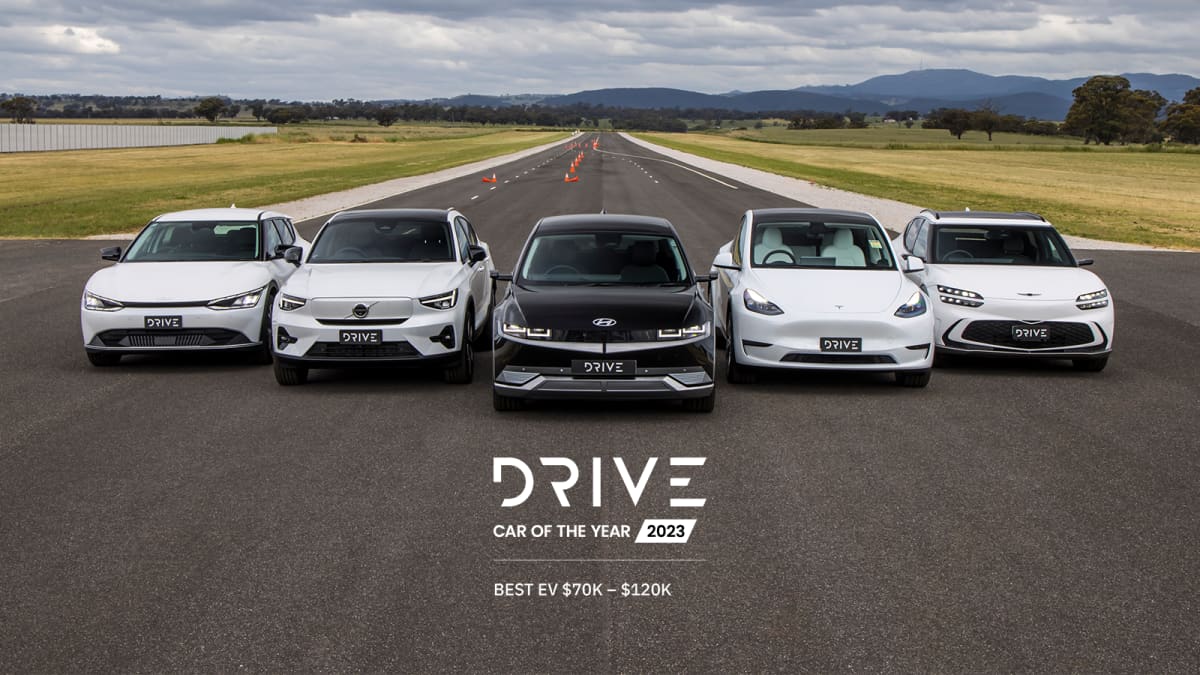
It’s also where you’ll find some of the best electric cars on the market generally. Although three of our five contestants are made with the same core ingredients, it’s the sum of their parts that sets them apart from each other.
Each feels individual, from the way they drive to the way they look. Hyundai Motor Group – encompassing Hyundai, Kia and Genesis – has truly pushed the electric car to new heights with a modular EV platform that’s one of the best on the market.
The fourth vehicle making the cut is the 2023 Tesla Model Y – an incredible package coming from the brand that truly defined the electric car. And with plenty of years of manufacturing under its belt, Tesla’s products are now built well and are genuinely hard to fault.
The fifth is the Volvo C40, an all-electric offering from the company that also gave us the Polestar EV brand.
This is Volvo’s first big step into the EV future, because until now Volvo has only offered hybrids. It’s also the first Volvo to be completely leather-free. The styling is attractive – think a coupe take on the already stylish XC40 – and the C40 cuts a fine figure whether it’s parked up or out in traffic.
So, which of our electrifying quintet came out on top?
-
Summary of how to maintain new cars for beginners25 February, 2024
-
4 car parts need periodic inspection and maintenance25 February, 2024
-
Mistakes to avoid when maintaining cars24 February, 2024
-
How Does Custom Car Coding Work?22 August, 2023
-
Unleashing the Power: 2023 The Trackhawk Badge12 August, 2023
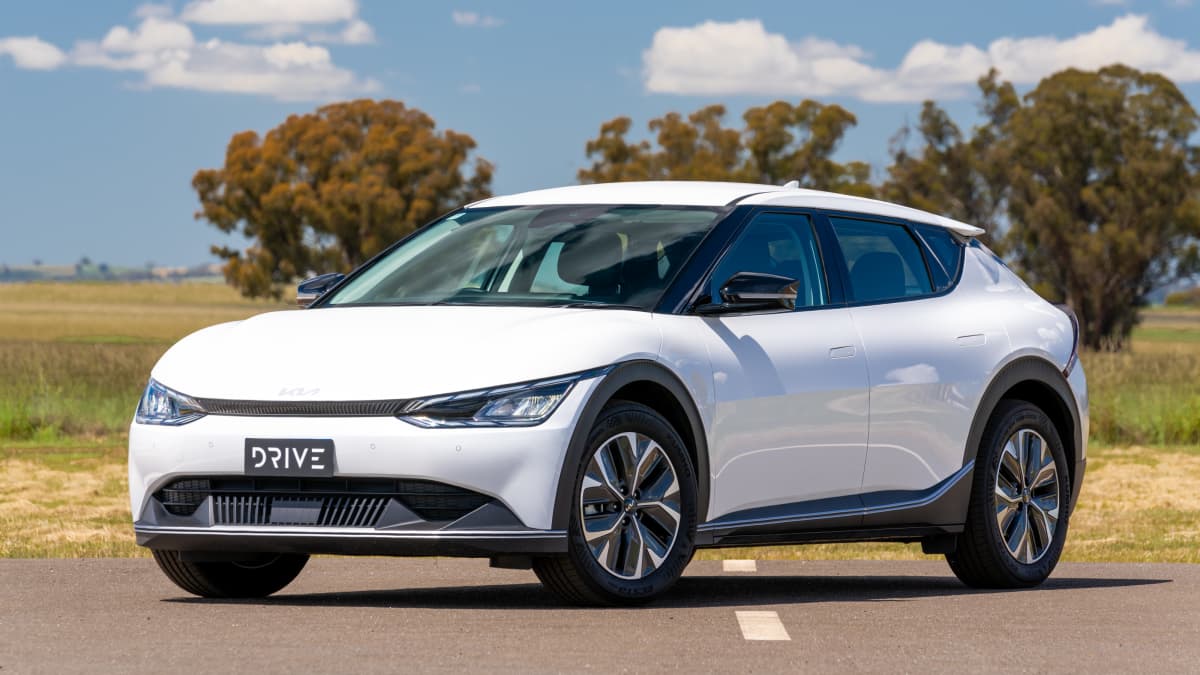

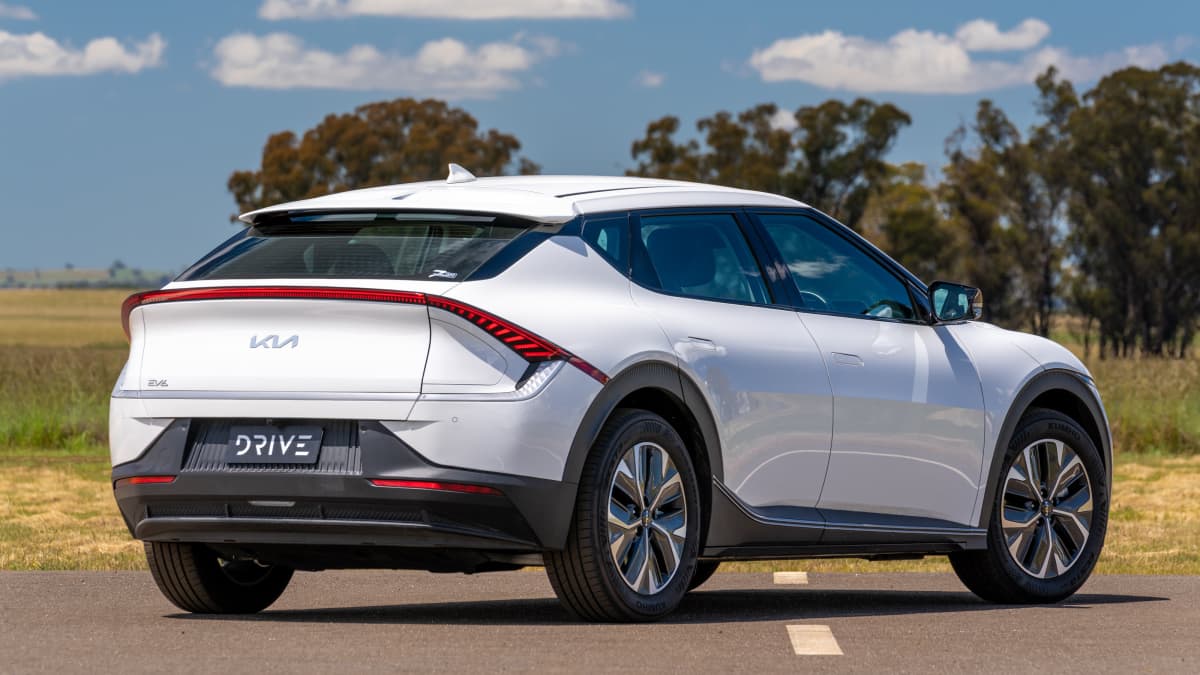
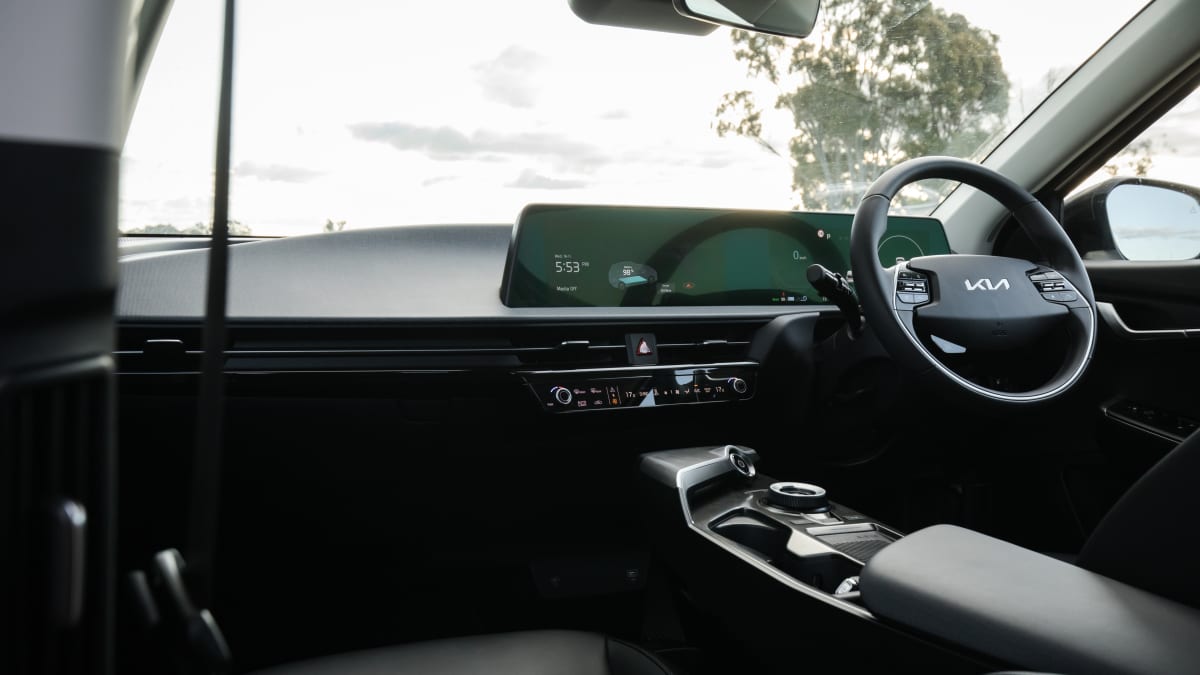

Contents
Winner: Kia EV6
Kia EV6
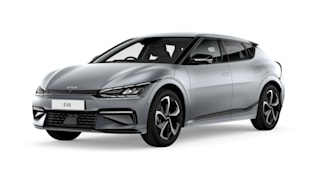
4 variants available
$ 72,590 – $ 99,590* MRLP
What we love
- -Performance and range
- -Spacious cabin
- -Suitable for a wide range of people
What we don’t
- -Interior looks bland
- -The one you want costs six figures
- -No spare wheel
The Kia EV6 is the right electric car for 2023.
Twinned under the skin with the Hyundai Ioniq 5, the EV6 range opens with the entry-level, rear-wheel-drive Air ($72,590), and progresses to the higher-spec GT-Line, in rear- or all-wheel-drive guises from $79,590 before on-road costs.
Shortly after Car of the Year judging concluded, Kia added the EV6 GT performance flagship to the range. With 430kW of power and 740Nm of torque, the EV6 GT has a claimed 0–100km/h time of a supercar-like 3.5 seconds, although this performance does reduce its driving range to 424km.
Strong demand overseas means only 700 examples of the EV6 Air and GT-Line reached Australia in 2022, although Kia confirmed that volumes would triple in 2023.
All EV6 models in Australia are powered by the larger of two battery packs available overseas, a 77.4kWh unit, mated to a single-motor, rear-wheel-drive configuration in the Air and GT-Line, with the option of dual-motor, all-wheel drive in the EV6 GT-Line. The EV6 GT comes standard with dual front and rear motors.
Single-motor variants are powered by a 168kW/350Nm motor on the rear axle, good for a 7.3-second 0–100km/h time, and 504km or 528km of range – with the higher figure achieved by the Air and its smaller 19-inch wheels (vs the GT-Line’s 20-inch wheels).
Review of 2023 Toyota Tacoma: A Reliable and Versatile Pickup Truck
The all-wheel-drive GT-Line adds a second motor on the front axle, upping outputs to 239kW and 605Nm combined, slashing the 0–100km/h time to 5.2 seconds, but cutting the driving range claim to 484km.
All three models offer 800-volt electrical systems with 350kW DC fast charging capable of a 10 to 80 per cent recharge in 18 minutes.
The Kia EV6 measures in at 4680mm long, 1880mm wide and 1550mm high, riding on a 2900mm wheelbase – a touch bigger than its Hyundai Ioniq 5 twin.
Standard features include dual 12.3-inch screens, 19-inch wheels, LED headlights and tail-lights, dual-zone climate control, wireless phone charging, parking sensors.
A full suite of active and passive safety technology is also standard, making the EV6 a prudent purchase as well as an environmental one.
It’s priced in the realms of reality, will travel over 500km in its cheapest form, and has enough space and size to suit SINKS, DINKS and families alike – however you identify.
Although those basics make it a hot contender for Drive Car of the Year, it still needs to do more. On the drive route it was easily the best of the bunch, with its Australian ride and handling tune truly shining on the day.
On fast-paced country roads it felt confident and, dare I say, fun to drive, and through the low-speed sections in and around town it was equally pleasurable. There’s ride control in the suspension, meaning the weight is well managed. As a result, it feels lighter than it is and comes across easy to drive.
Through the slalom and swerve-and-avoid tests it excelled, too, showing there’s great inherent safety built in to cope with its higher than ordinary levels of performance.
The interior is lovely, too, but minimal in its decoration. One judge thought it looked boring compared to the Ioniq 5 and Genesis GV60 pair, and they have a point. Although it doesn’t look as flash, there’s heaps of space in both the first and second rows, and its 490L boot is plenty big for life’s extracurricular activities.
Your family and pets will fit, meaning you could genuinely pivot toward a single electric car household with the Kia EV6. We haven’t even got to its cool vehicle-to-load technology yet, but that capability is just another ace up its sleeve.
One of the best electric cars available at any price point, the Kia EV6 has cemented Kia as a true force in the EV space.
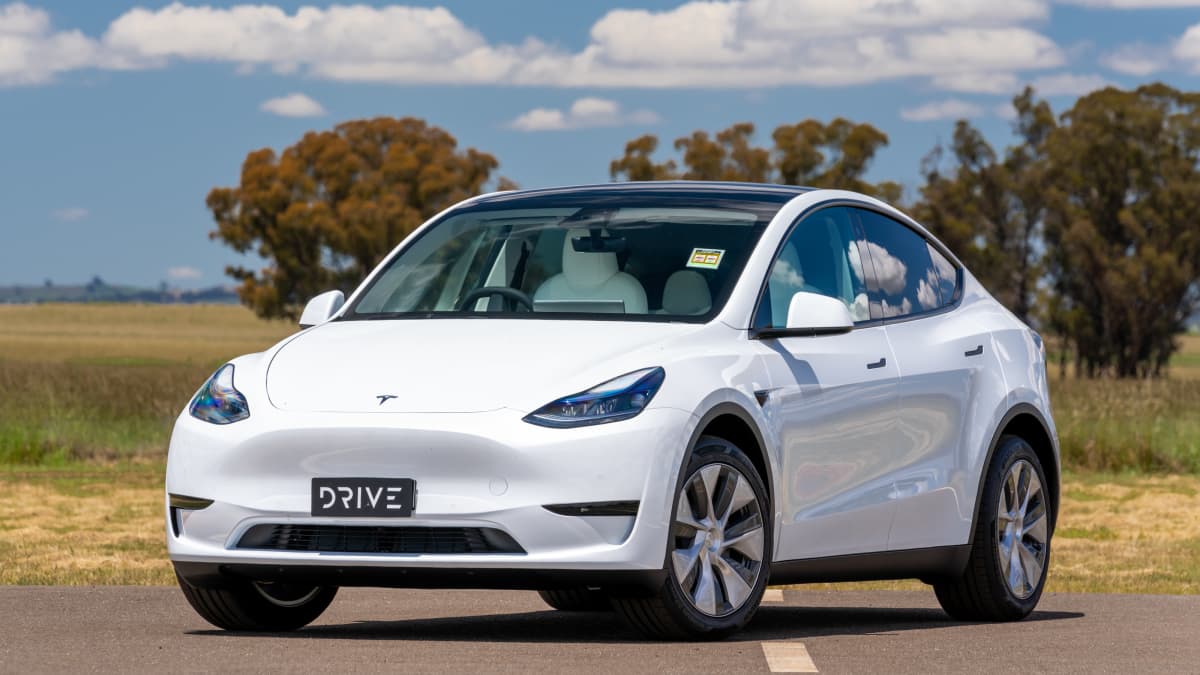
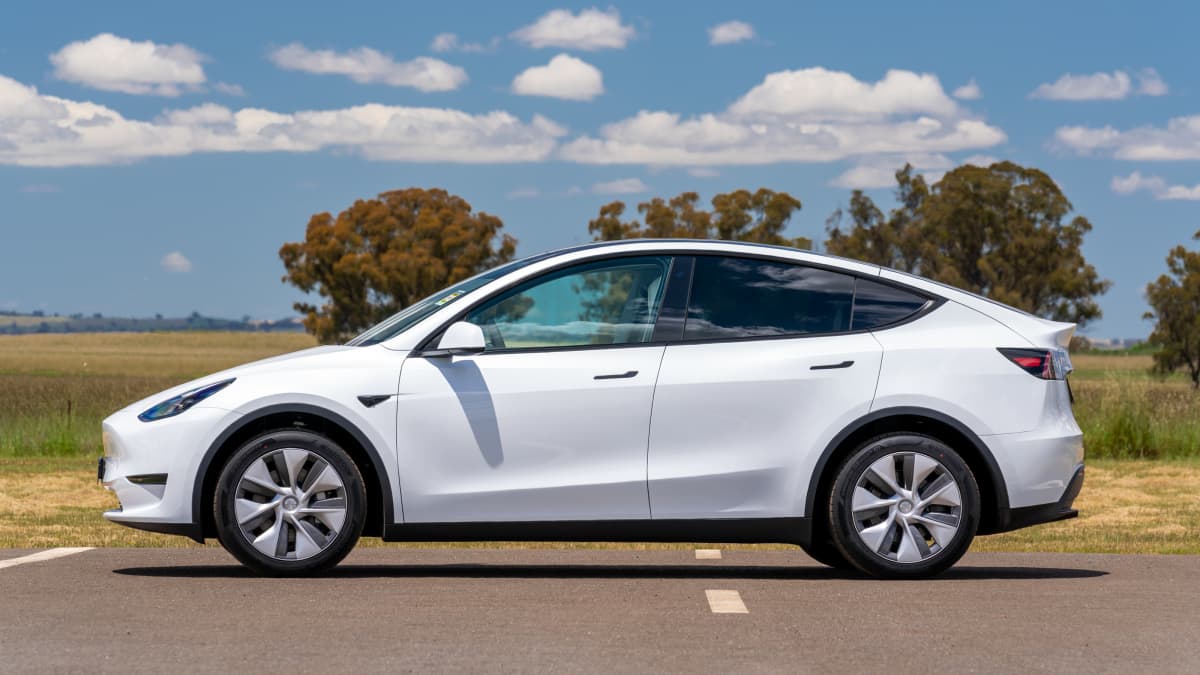
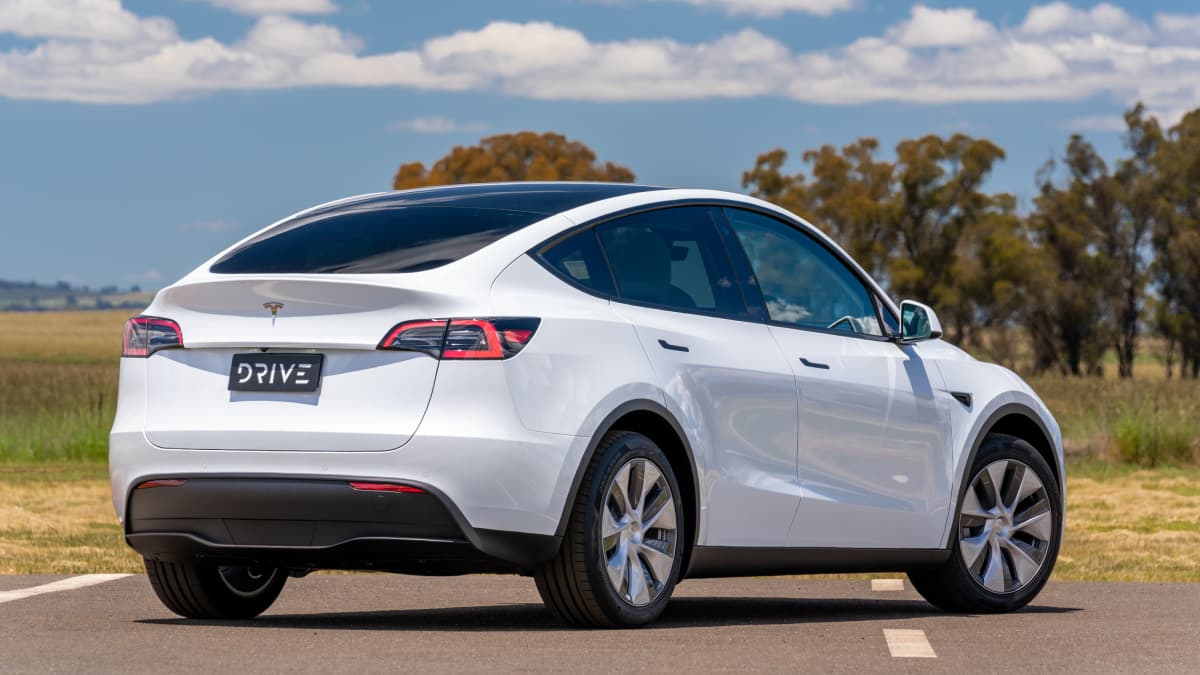
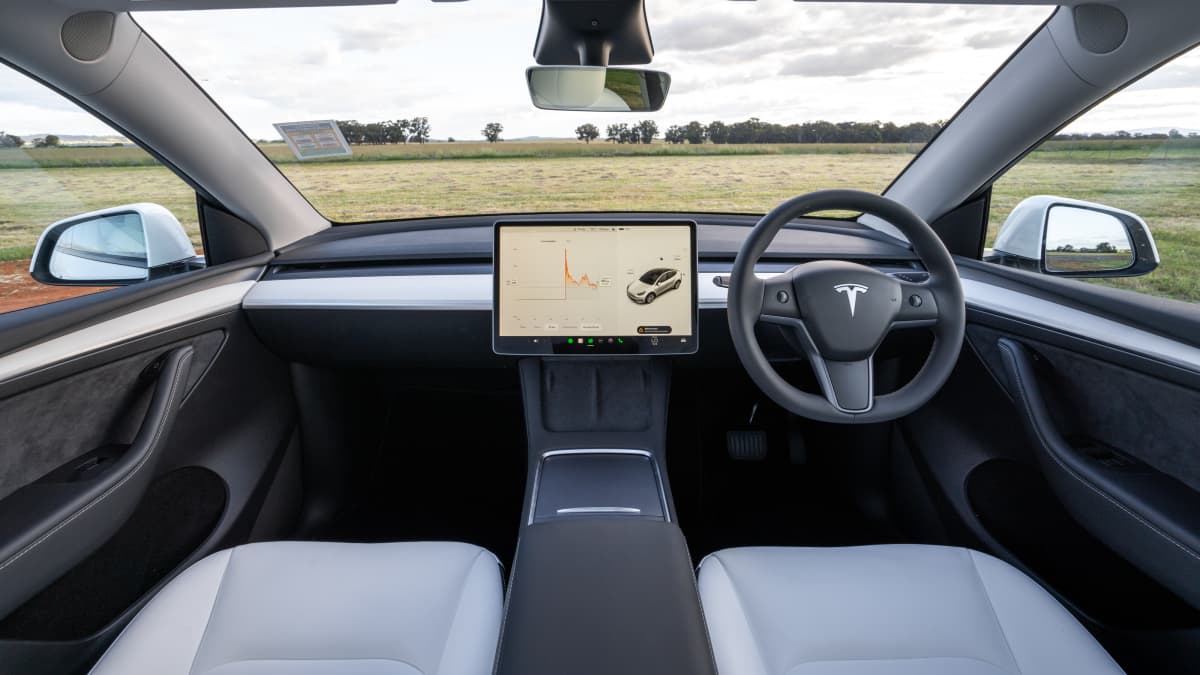
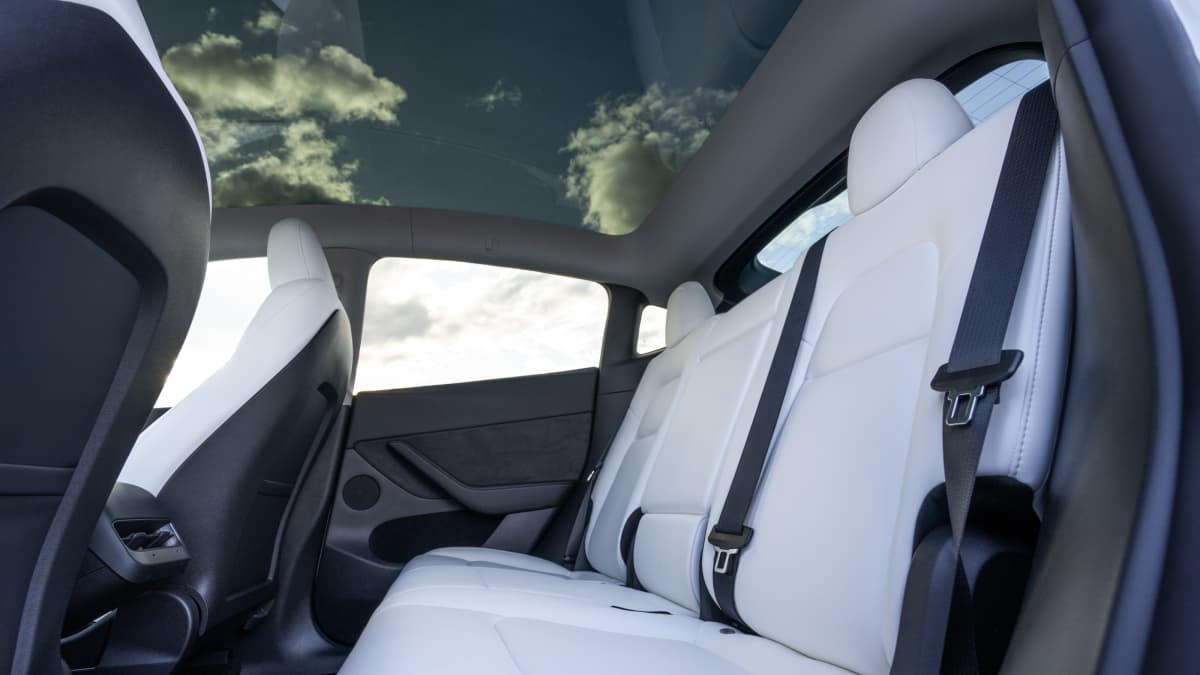
Runner-up: Tesla Model Y
The 2023 Tesla Model Y lost by one vote to the Kia EV6, which shows how close the Tesla came to the ultimate prize. With performance and range favouring the Kia, the Model Y still offers strong value. It’s also six or so grand cheaper than the Kia, meaning outright purchase price is in its favour.
Before we go deeper into its Drive Car of the Year performance, let’s refresh our memory of the Model Y’s fundamentals. This higher-riding crossover shares many of its parts with the Tesla Model 3 sedan – currently Australia’s best-selling electric car.
The $72,300 base variant – known only as ‘Model Y’ – is powered by a single motor on the rear axle producing 220kW. This allows the 0–100km/h to be completed in a claimed 6.9 seconds on the way to a top speed of 217km/h. A lithium-ion battery pack offers 62.3kWh of energy storage and provides a driving range of 455km.
A panoramic glass roof, heated seats, faux leather upholstery, four USB ports, wireless charging, and 19-inch ‘Gemini’ wheels are fitted to the base car as standard, plus the base level of Tesla’s Autopilot driver assist package.
The flagship Performance variant – which was not available for testing – starts from $96,700 without LCT.
A dual-motor layout sends 393kW to all four wheels and delivering a claimed 0–100km/h time of 3.7 seconds, and an electronically capped top speed of 250km/h. A larger 82.8kWh lithium-ion battery pack provides a driving range of 514km between charges.
Inside both variants, infotainment and live vehicle data including speed comes via a 15.0-inch centre touchscreen, also used to adjust car settings including seat and steering wheel position, temperature, volume and driving mode.
The interior is another reason to consider it, as it’s both spacious and high-end. The simplistic nature of its single large screen in the middle is great, and the singular air vent is another masterclass in terms of marrying form and function.
However, there are some misses, like a sheer lack of a central and large speedo. Placing it in the corner of the screen and not directly in front of the driver – let alone making it tiny – is an ergonomic faux pas.
We can debate for hours whether you think the whoopee cushion function is useful or not later. The second row is big, although not as large as the Kia’s. If you plan to use the second row frequently, the EV6 makes for a better partner.
The Model Y was good on the road loop and through the slalom, but when splitting hairs, the Ioniq 5 and EV6 both felt more well rounded and controlled during dynamic testing.
It’s a hard car to fault, and it ran the Kia close, but ultimately came up just short of taking the silverware.
| Tesla Model Y showroom 2022 Tesla Model Y review 2022 Tesla Model Y price and specs |
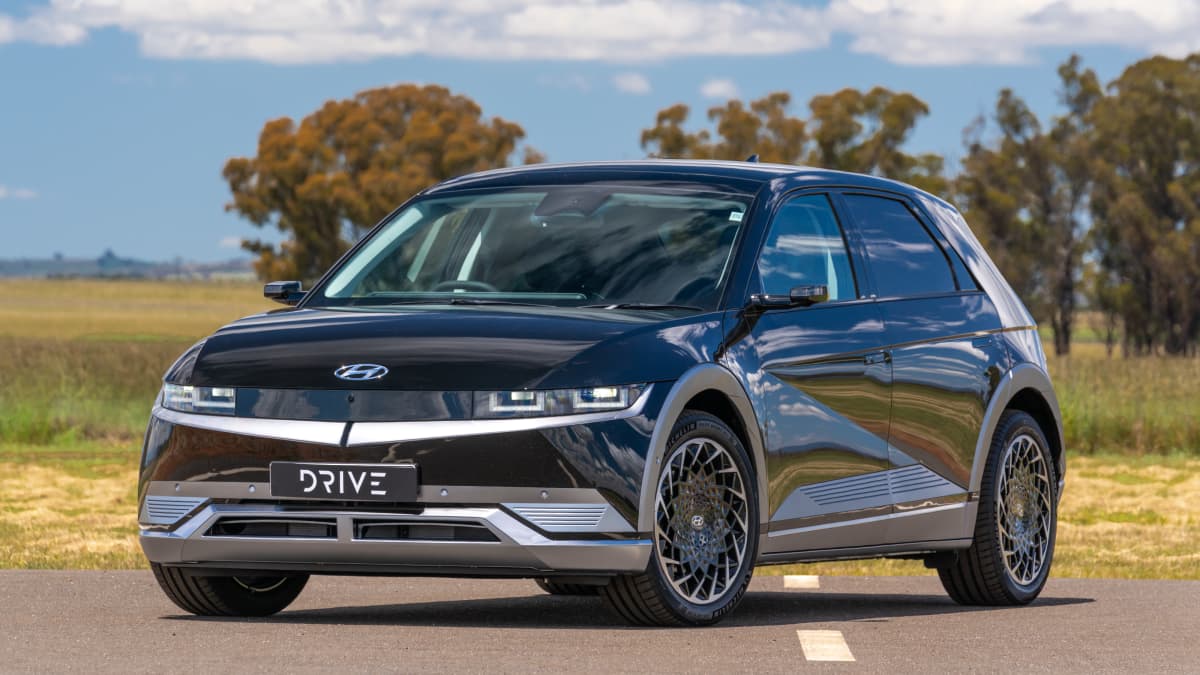
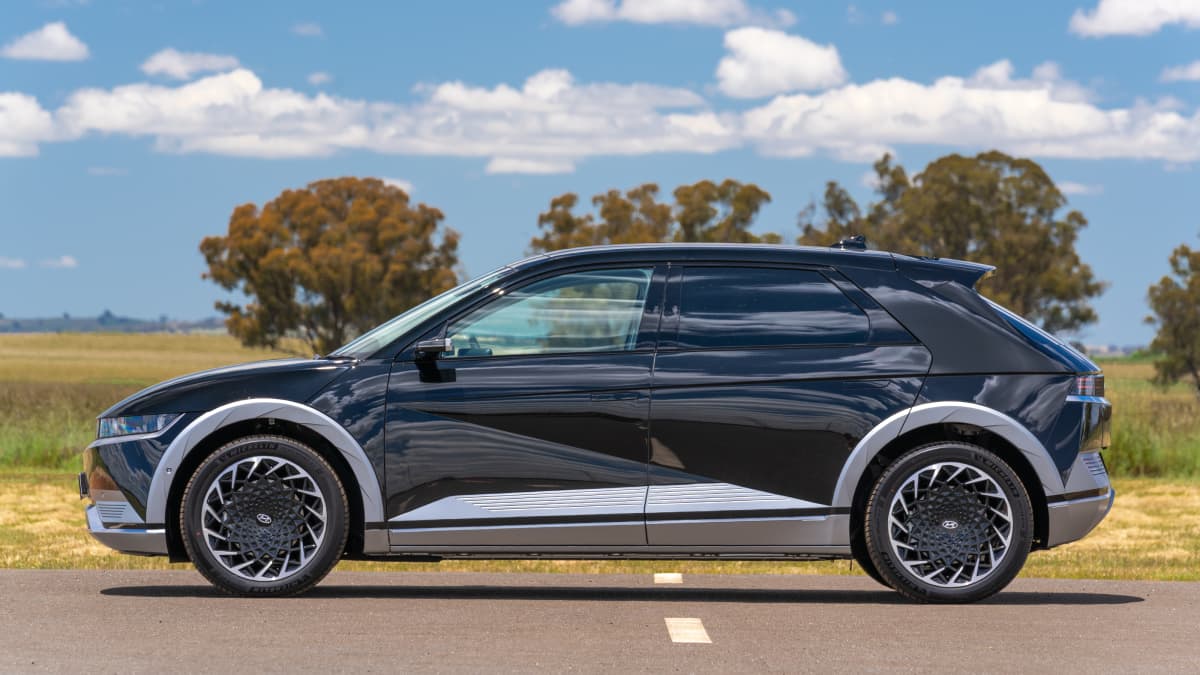
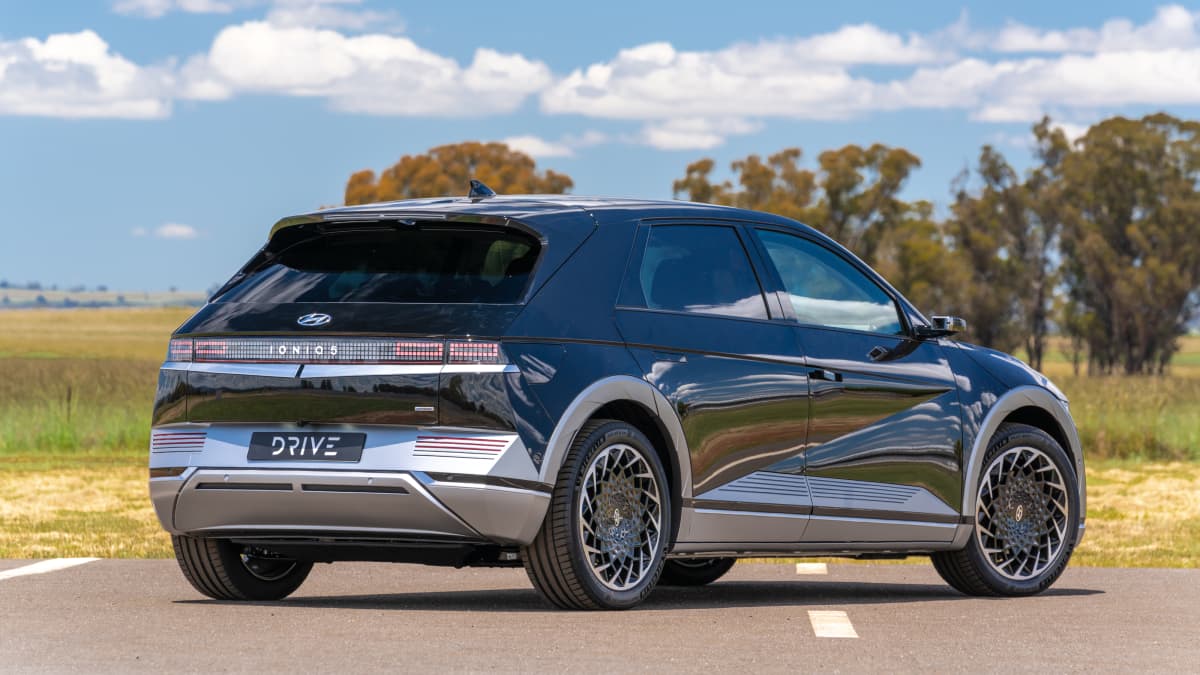
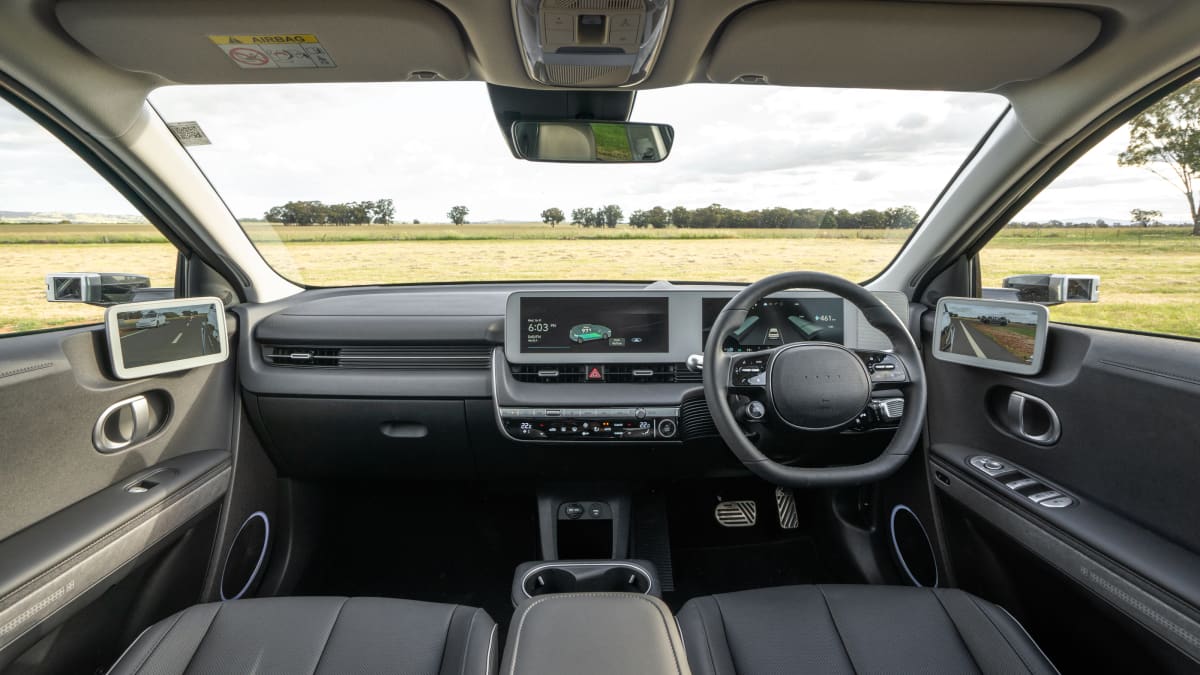
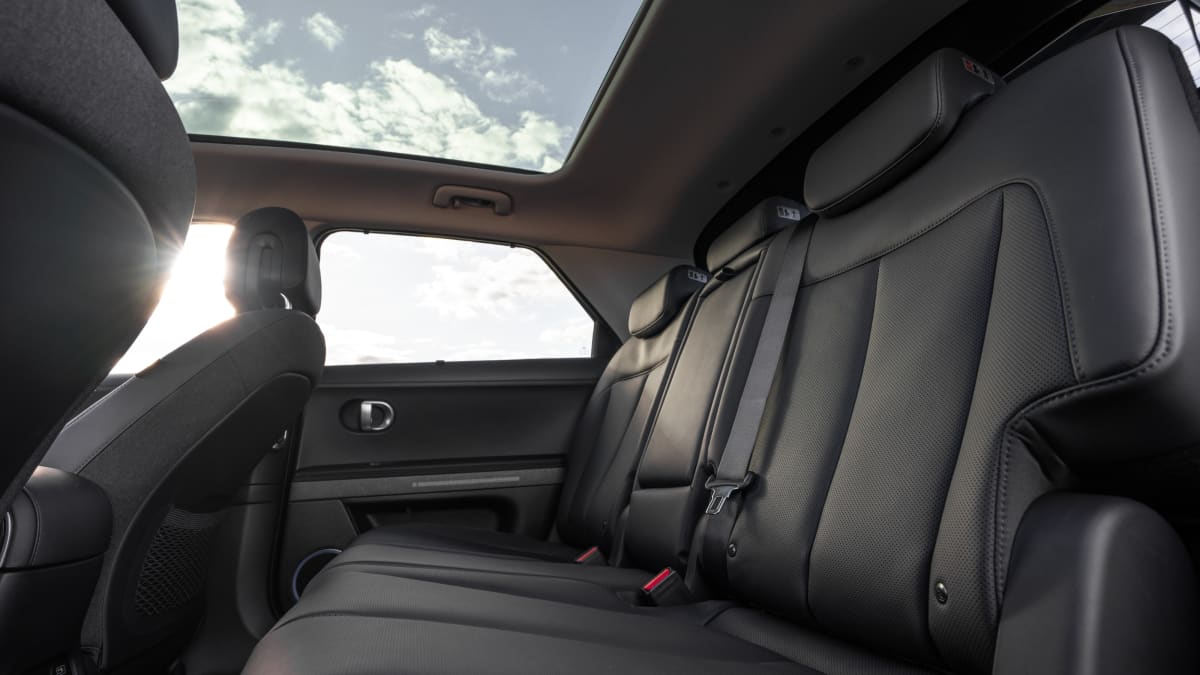
Finalist: Hyundai Ioniq 5
Although our electric vehicle categories have changed and expanded for 2023, Drive’s Best Electric Car Under $100K last year was the 2022 Hyundai Ioniq 5.
Between now and then, the Hyundai Ioniq 5 range has been upgraded in a number of key areas, and welcomes a new Techniq variant.
For 2023, the Ioniq 5 is priced from $72,000 plus on-road costs for the base rear-wheel-drive Dynamiq variant – an increase of $2100.
The all-wheel-drive Hyundai Ioniq 5 Techniq is now priced from $79,500 plus on-road costs (up by $2000), while the new flagship Epiq variant starts from $85,000 before on-road costs – $2590 less than the Kia EV6 GT-Line that shares a number of similar features.
All three Hyundai Ioniq 5 grades are now powered by a 77.4kWh lithium-ion battery (up from 72.6kWh), which operates at 697 volts (up from 653 volts). According to Hyundai, the new battery pack increases the Ioniq 5 Dynamiq’s claimed driving range to 507km from 481km on the European WLTP test cycle.
The single-motor, rear-wheel-drive Dynamiq variant benefits from an 8kW power bump – now producing 168kW and 350Nm, matching the rear-drive EV6.
Hyundai has also delivered a driving range increase for the Techniq, with the dual-motor, all-wheel-drive grade achieving up to 454km between charges (up from 430km) while developing 239kW and 605Nm (up 14kW).
The Hyundai Ioniq 5 remains capable of supporting 400- and 800-volt charging infrastructure, with the capacity to DC fast charge at up to 350kW – enough to replenish the battery from 10 to 80 per cent in a claimed 18 minutes in optimal conditions.
Standard equipment is unchanged across the Dynamiq and Techniq grades – while the new Epiq flagship includes a number of features previously unseen on the Ioniq 5, including a heat pump (which repurposes excess battery heat to warm the cabin), a battery conditioning system (activating in cold conditions to improve the car’s DC charging and performance), and digital side mirrors that replace physical mirrors with cameras.
It also adds a Vision Roof fixed glass sunroof that had previously been available as a cost option, but is now exclusively fitted to the Ioniq 5 Epiq as standard equipment.
Hyundai Australia says the 2023 Ioniq 5 has gained revised suspension – branded as a “new ride and handling package” – aimed at delivering improved wheel control, bump absorption and body control. In addition to the physical upgrades, Hyundai Australia has doubled the Ioniq 5’s service intervals to two years or 30,000km, whichever comes first.
All of those additions are worthwhile and bring tangible benefits to consumers. They also help the Ioniq 5’s Drive Car of the Year case, but it still wasn’t enough to beat out the Kia EV6.
The Ioniq 5 continued to impress the judges with its interior layout and design concept, although some material choices hold it back. It’s still refreshing to drive even two years after launch, and the quality is truly up there with premium segment metal.
However, the second row isn’t as spacious as others in the class, nor is the boot. Out on our test loop, some judges noted its comfort-tuned suspension felt a bit floaty and that others in the field offered better back-road manners.
Through the slower-speed sections of town it excels, however, and was still extremely capable during swerve and avoid testing. Performance is excellent, too, with our test car being the top-spec Epiq model featuring all-wheel drive and dual-motor driving.
Still, the entry-level rear-wheel-drive car does go the farthest (507km claimed versus 454km for the all-wheel drive) and makes for a great option if range is your biggest concern.
| Hyundai Ioniq 5 showroom 2022 Hyundai Ioniq 5 2WD review 2022 Hyundai Ioniq 5 price and specs |
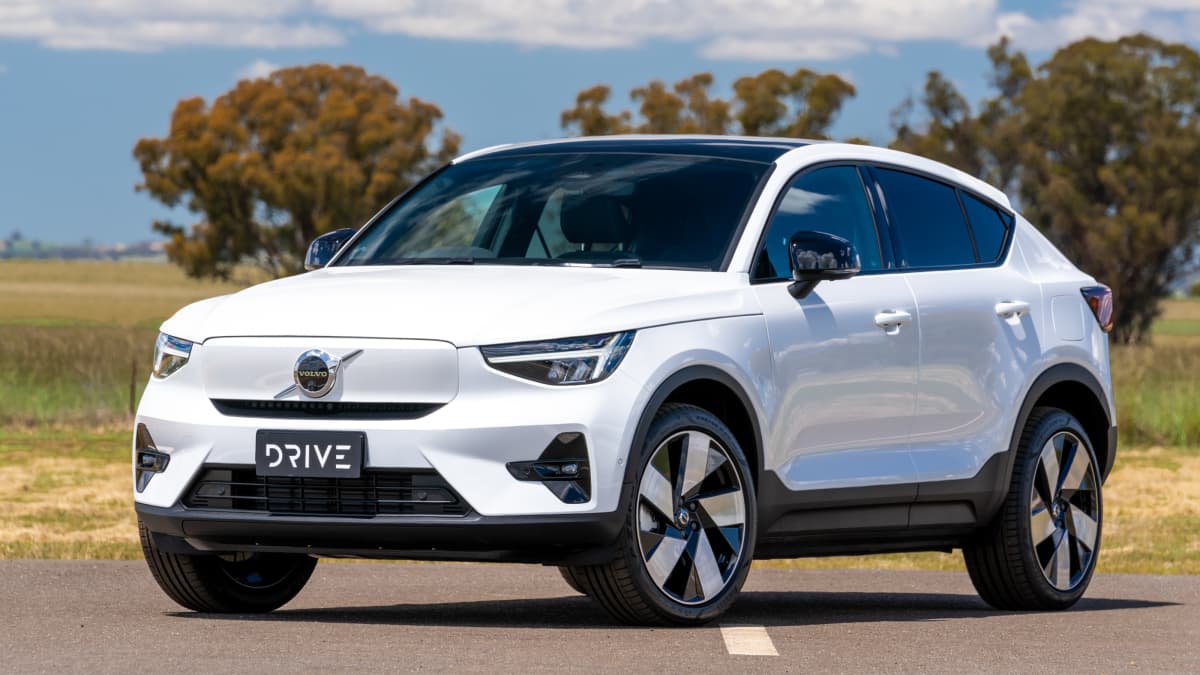
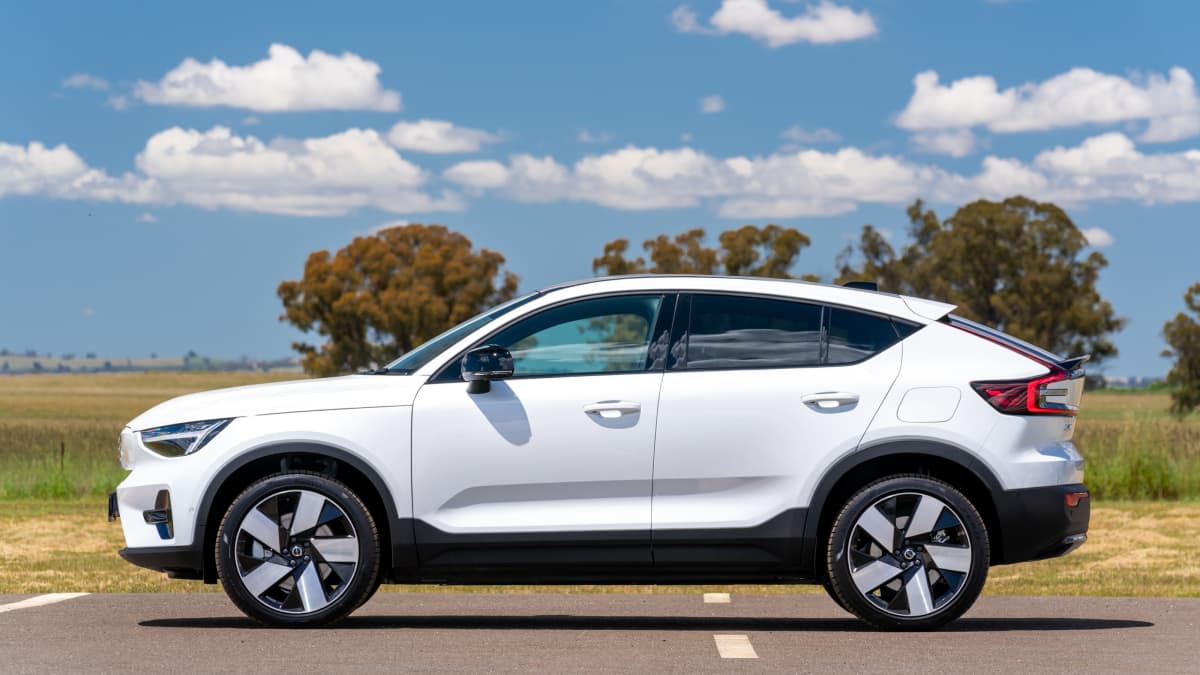
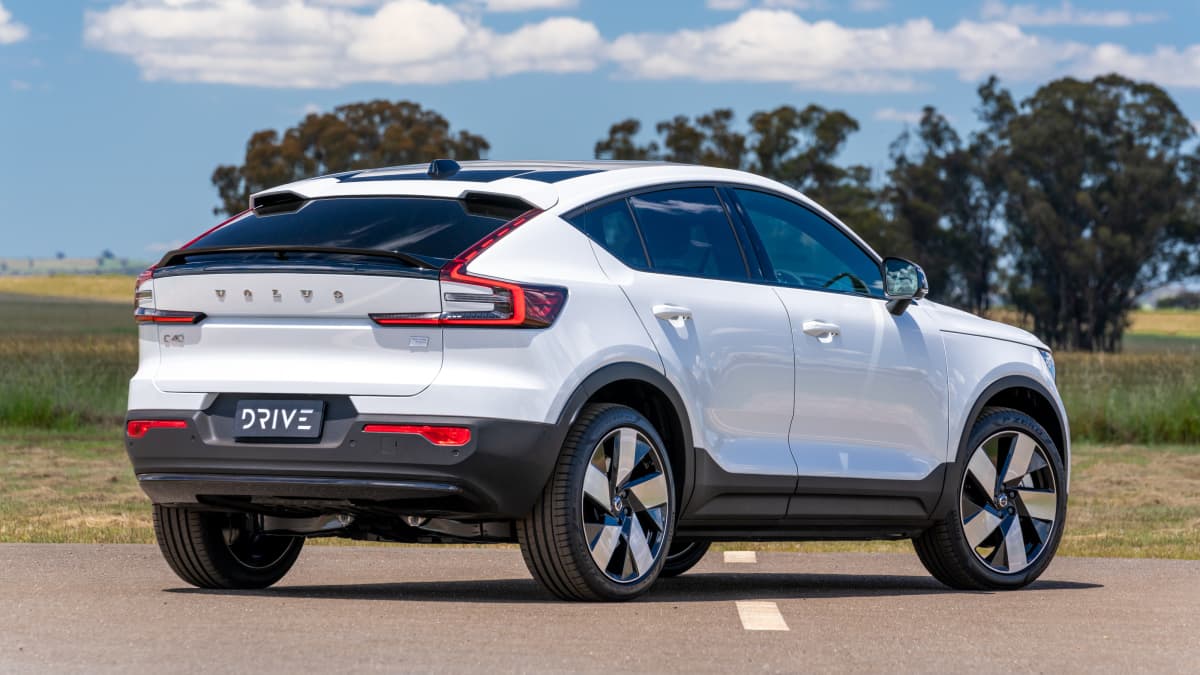
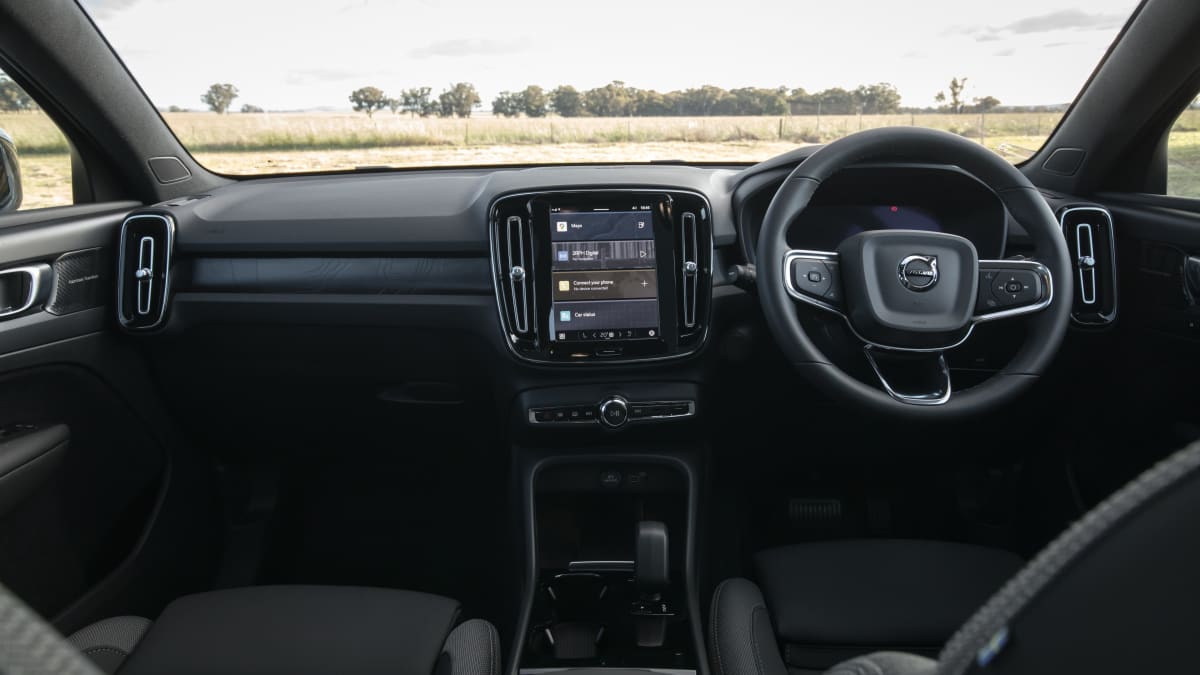

Finalist: Volvo C40
Volvo C40
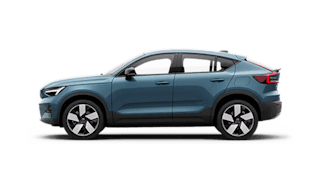
2 variants available
$ 75,990 – $ 83,490* MRLP
What we love
- -Styling and presentation
- -Powertrain
- -Interior ergonomics and features
What we don’t
- -No spare wheel
- -Sloping roof impedes on second row
- -Can feel bulky behind the wheel
Read Reviews
Volvo’s first dedicated electric vehicle is a good one.
Although it doesn’t ride on a dedicated and ground-up electric car platform like the others in this class – instead repurposing petrol-powered underpinnings with electric motors and batteries – it’s hard to tell otherwise.
Two models are available, with the entry-grade C40 featuring a single electric motor and front-wheel drive, while the top of the range gets dual electric motors and all-wheel drive. Pricing starts from $74,990 before on-road costs for the single motor, and $82,490 before on-road costs for the dual motor.
The standard equipment list is long – including safety – with LED head- and tail-lights and a panoramic glass roof standard for both C40s. Step up to the dual-motor model and you get special 20-inch wheels (19s are standard for the single motor), a premium Harman Kardon audio system, textile and microtech interior trim, and a 360-degree camera.
The exterior styling is cohesive, interesting and different, whereas the interior is a classic tale in Volvo excellence and ergonomic prowess. It’s full of clever touch points like comfortable and back-supporting seats, plenty of large storage both uncovered and covered (for valuables), and excellent visibility.
It helps you sink in and feel comfortable right away, regardless of whether you’re in the first row or second row of seating. Speaking of which, there’s decent room in the back, great visibility, and an excellent hip-point too. The only downside here is that swooping roof line, as it robs some headroom in the back that taller guests in the back could benefit from.
When driving and out on the road, judges were impressed by the sound isolation of the cabin. It’s eerily quiet inside, and there’s not a squeak or rattle to be heard. However, on some of our country roads, the mighty Volvo did feel heavy and bulky.
Its suspension tune could be a pinch softer, and others over the same route felt more agile, nimble and more comfortable.
Through our evasive driving scenarios, it remained composed and easy to handle, however, with that stiff suspension definitely enabling great control of the vehicle’s mass when you begin to flick it around to re-enact an emergency situation.
It does everything well enough, but that’s never good enough for Drive Car of the Year. The competition is stiff with brands like Hyundai and Kia really proving that dedicated electric vehicle platforms give their cars the edge – for now.
| Volvo C40 showroom 2023 Volvo C40 Recharge review 2023 Volvo C40 Recharge price and specs |
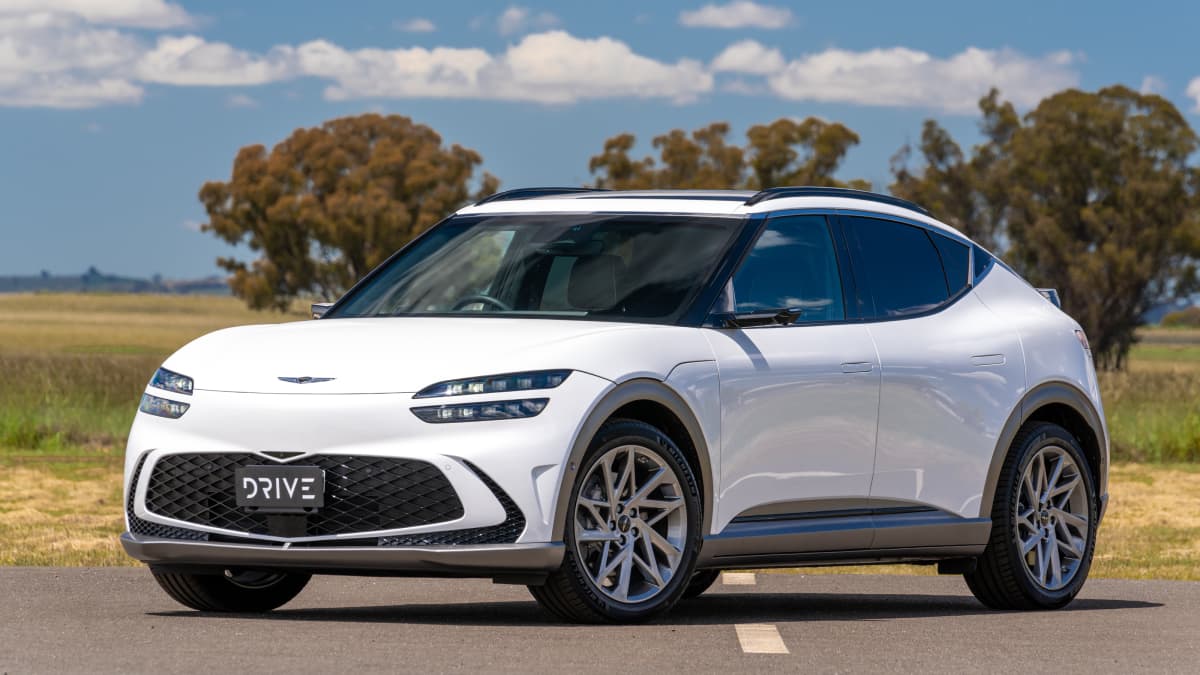
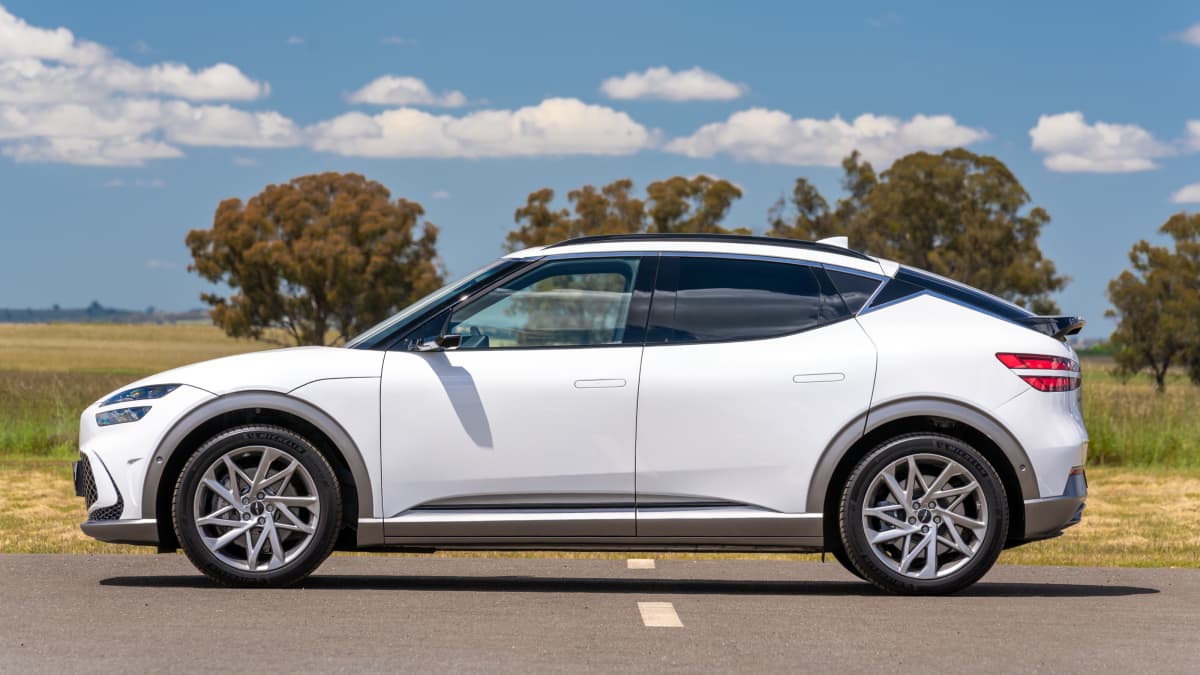



Finalist: Genesis GV60
Genesis GV60

2 variants available
What we love
- -Interior will impress
- -Sporty handling
- -Looks great
What we don’t
- -Feels expensive next to the other two
- -Busy ride quality
- -Second row and boot let down by its design
Interestingly, the Genesis GV60 was a car many judges wanted to poke about in.
Sure, it’s the most expensive car on test, but the overall design and presentation intrigue you and pull you in. The novelty spherical and rotating gearshifter is a fun highlight, and the cabin’s finishing and detailing were unanimously marvelled over – even if you’re not into the way it looks.
There’s so much technology and things to stare at, so if you value presentation and a general atmosphere, you’ll find yourself at home here.
There are two variants in the GV60 line-up, the ‘regular’ GV60 AWD and the GV60 Performance AWD. Both are offered in a single Luxury specification.
Priced from $103,700 before on-road costs, the regular GV60 offers 234kW and 605Nm outputs with a claimed energy usage of 18.8kWh/100km – it’s no slouch and can complete the 0–100km/h sprint in 5.5sec.
Stepping up to the $110,700 GV60 Performance AWD reduces that time to 4.0 seconds, thanks to the hefty 360kW/700Nm outputs in BOOST mode.
Trim and equipment levels are largely the same, with the Performance model running on 21-inch wheels (to the regular GV60’s 20s), as well as offering adaptive ‘road preview’ electronic damper adjustable suspension. All cars include a fixed panoramic roof, heated and ventilated seats, and even a heated steering wheel.
The GV60 rides on the same platform as the Hyundai Ioniq 5 and Kia EV6, but in the pursuit of luxury, space was sacrificed. It’s smaller in areas like the second row and cargo area, and the design takes precedence over ergonomic use of space.
The battery packaging under the floor means adults in the back receive limited leg room, too, so if you’re lanky like this writer it can get squashy.
Out on the road loop, it felt heavy and busy. Where other cars took the road in their stride, the Genesis didn’t feel as nice as the other three. It’s clear the brand has tried to force some driving prowess down its guts, but the firmness does juxtapose against its overall luxury vibe.
Still, the performance is remarkable like all others on the fleet, and its composure through the slalom was on par for the segment. The twin-motor driveline means staggering grip and acceleration, and despite weighting 2.2 tonnes it managed the swerve-and-avoid pretty bloody gracefully.
You can read about all the other 2023 Drive Car of the Year categories and winners here:
Drive Car of the Year categories and winners

